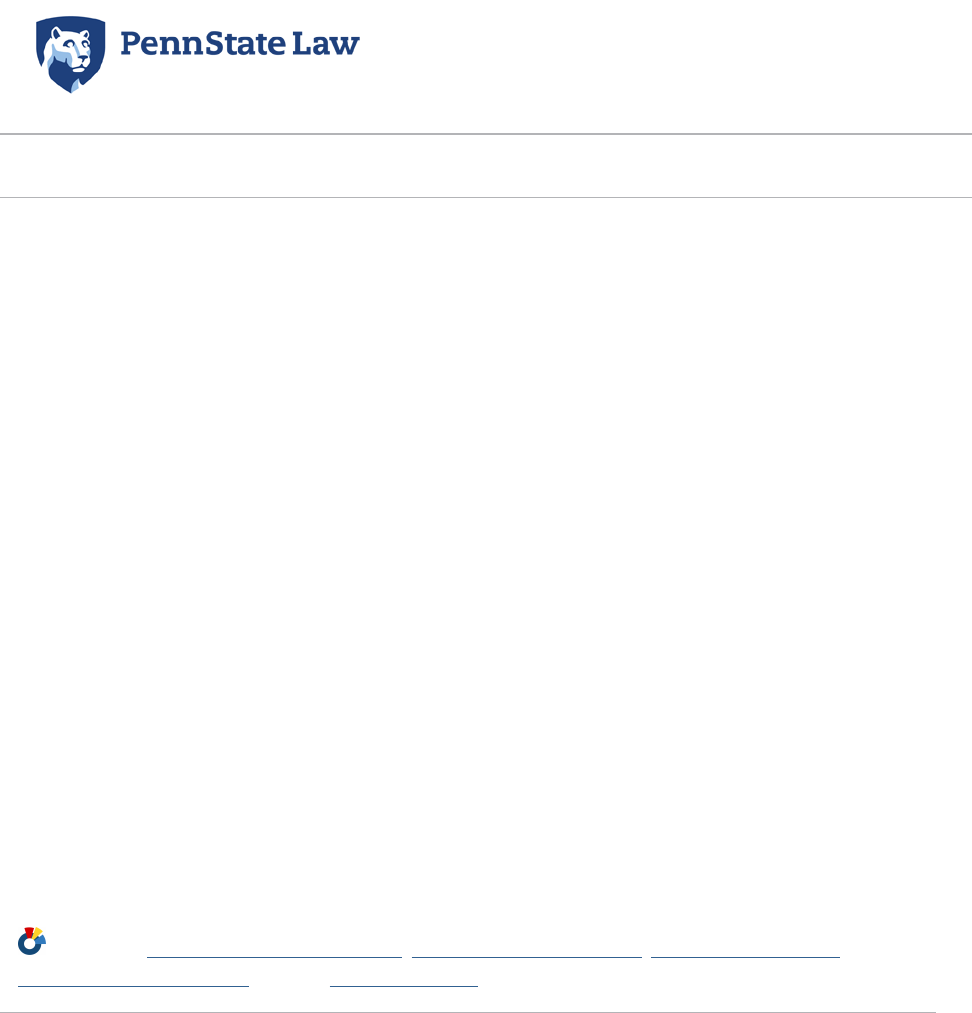
Penn State Law eLibrary
%*'$"') "( *"),%'!(
Penn State Law
%""%+) ($ ) %$"+%'!() /&" '',"+&(**+%'!(
')%) %##' "+%##%$( %##%$+%##%$( %$)')(%##%$(
$(*'$+%##%$($) %')(%##%$(
. (') " ('%*))%,%*%''$%&$((,)*"),%'!()$$))+ '',)($&)%' $"*( %$ $%*'$"
') "(,$*)%' -# $ ()')%'%$$))+ '',%'#%' $%'#) %$&"(%$)) '#&(**
%##$ )) %$
(%*'/&(+%'!(&'((%#' ('$
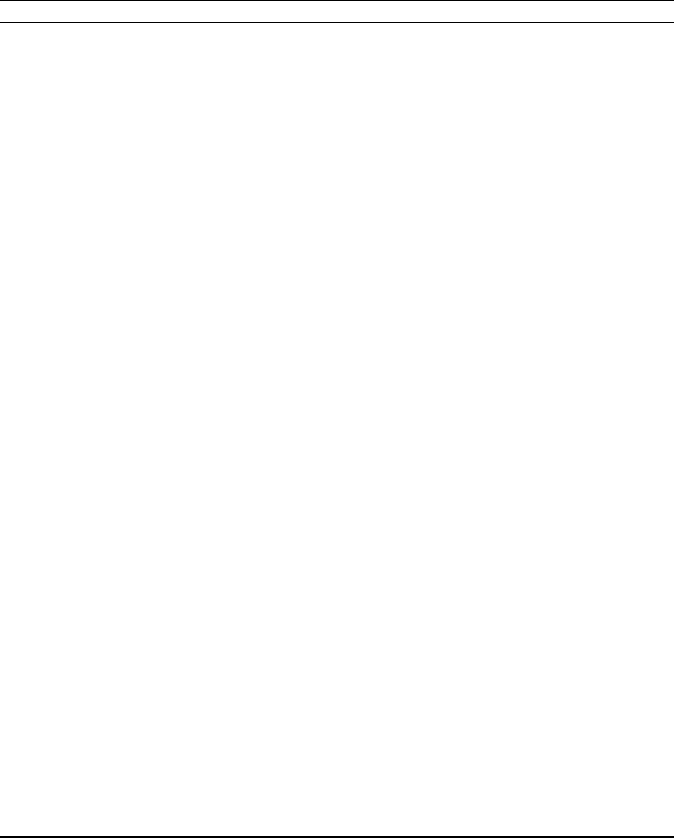
INSURING INTENTIONAL TORTS ARTICLE (FINAL) (DO NOT DELETE) 6/1/2015 9:09 AM
HASTINGS BUSINESS LAW JOURNAL 65
DEBUNKING THE MYTH THAT
INSURANCE COVERAGE IS NOT
AVAILABLE OR ALLOWED FOR
INTENTIONAL TORTS OR DAMAGES
Christopher C. French*
I. INTRODUCTION
What do unicorns, leprechauns, Santa Claus, and the Easter Bunny
have in common with the proposition that insurance is not available for
injuries or damage intentionally caused? They are all myths. It is a myth
that insurance only covers unintentional injuries or damage.
This myth has its roots in what is known as the “fortuity” doctrine in
the first party or property insurance context. Although the term “fortuity”
does not appear in insurance policies, some courts have held that there is as
an implied exclusion of coverage for any loss that is not fortuitous.
1
A loss
is fortuitous if it is not certain to occur.
2
The fortuity doctrine was transferred to the third party or liability
insurance context when it was incorporated into the definition of an
“occurrence”
3
and subsequently as the “expected or intended” exclusion.
4
* Christopher C. French is a partner at K&L Gates LLP in Pittsburgh, Pennsylvania, and an
Adjunct Professor of Insurance Law at Duquesne Law School; J.D., Harvard Law School; B.A.,
Columbia University. The author gratefully acknowledges the legal research contributions of Robert
Vernon to this article. The views expressed in this article are the author’s and not necessarily those of
K&L Gates LLP or any of its clients.
1
. See generally, Stephen A. Cozen & Richard C. Bennett, Fortuity: The Unnamed Exclusion, 20
FORUM 222 (1985).
2
. Avis v. Hartford Fire Ins. Co., 195 S.E.2d 545, 548 (N.C. 1973).
3
. See, e.g., Donald S. Malecki and Arthur L. Flitner, Commercial General Liability Insurance,
Appendix A (8th ed. 2005); Bay Cities Paving & Grading v. Lawyers’ Mutual Ins. Co., 5 Cal.4th 854,
865 n. 4 (1993) (quoting Mich. Chemical Corp. v. American Home Assurance Co., 728 F.2d 374, 378
(6th Cir. 1984).
4
. The “expected or intended” exclusion, or a variation of it, is found in ISO’s 1986, 1990, 1993,
1996, and 2006 occurrence-based and claims-made CGL Coverage Forms. See Malecki, supra note 3,
at Appendices B, C, E, and F. See also Kristin Wilcox, Intentional Injury Exclusion Clauses – What is
Insurance Intent?, 32 WAYNE L. REV. 1523 (1986) (noting that many “homeowner’s insurance policies
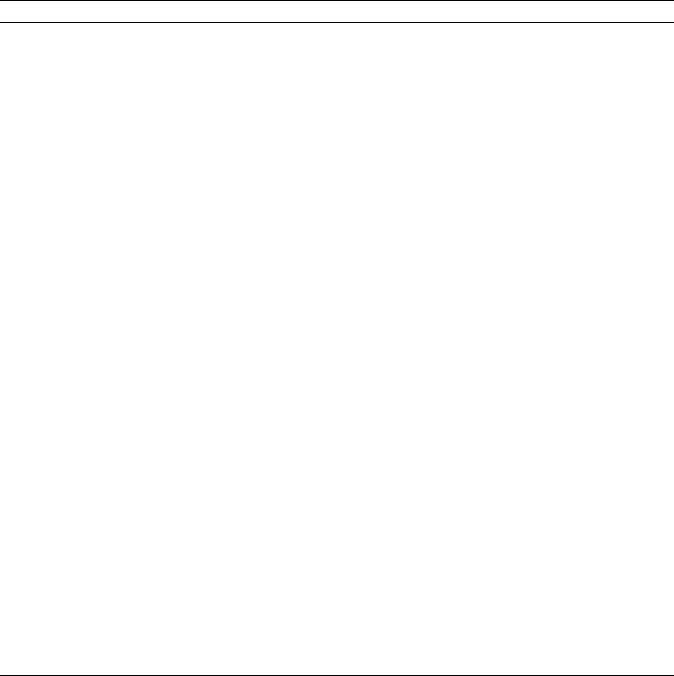
INSURING INTENTIONAL TORTS ARTICLE (FINAL) (DO NOT DELETE) 6/1/2015 9:09 AM
66 HASTINGS BUSINESS LAW JOURNAL Vol. 8:1
Some states have even codified the fortuity doctrine. For example, section
533 of the California Insurance Code provides “An insurer is not liable for
a loss caused by the willful act of the insured; but he is not exonerated by
the negligence of the insured, or of the insured’s agents or others.”
5
When claims arise, insurers attempt to further advance the myth by
arguing that it would be against “public policy” to allow insurance to cover
injuries or damage intentionally caused by the policyholder.
6
Without
question, there are some decisions in which the courts have held that, as a
matter of public policy, an insurance policy should not be permitted to
provide coverage for injuries or damage intentionally caused by the
policyholder.
7
Even some commentators agree:
[T]here is nothing contrary to public policy in making and enforcing a
policy of liability insurance. But an agreement to indemnify for
damages imposed by law for injuries willfully inflicted would be
unenforceable since it is contrary to public policy to permit anyone to
receive indemnity against the consequences of injuries willfully
inflicted by him.
8
Further, in some states, it is against public policy to allow insurance
coverage for punitive damages, which often are awarded only for egregious
or intentional misconduct.
9
The reasoning behind this public policy is that
exclude coverage for injuries caused intentionally by the insured.”).
5
. Cal. Ins. Code § 533 (West 1985). See also Russ-Field Corp. v. Underwriters at Lloyd’s, 164
Cal. App. 2d 83, 96–97 (1958) (“A ‘willful act’ as used in this statute connotes something more
blameworthy than the sort of misconduct involved in ordinary negligence, and something more than the
mere intentional doing of an act constituting such negligence.”); accord Cal. Civ. Code § 1668 (West
1985) (declaring that contracts that seek to exempt one of the parties from responsibility for willful
injury are against public policy).
6
. See, e.g., Karen Cuttler, Liability Insurance for Intentional Torts – Subrogation of the Insurer
to the Victim’s Rights Against the Insured: Ambassador Insurance Co. v. Montes, 32 RUTGERS. L. REV.
155, 157 (1979).
7
. See, e.g., Hussar v. Girard Life Ins. Co., 252 So.2d 374, 374 (Fla. Dist. Ct. App. 1971) (public
policy prohibits recovery from health insurer for self-inflicted injuries); Commercial Travelers Mut.
Accident Ass’n v. Witte, 406 S.W.2d 145, 149 (Ky. Ct. App. 1966) (a beneficiary cannot recover life
insurance proceeds if he murders the insured); Checkley v. Ill. Cent. R.R. Co., 100 N.E 942, 944 (Ill.
1913) (“A fire insurance policy issued to anyone, which purported to insure his property against his
own willful and intentional burning of the same, would manifestly be condemned by all courts as
contrary to a sound public policy . . .”).
8
. 1 ROWLAND H. LONG, THE LAW OF LIABILITY INSURANCE § 1.02 (1996).
9
. See, e.g., State Farm Fire & Cas. Co. v. Super. Ct., 191 Cal. App. 3d 74, 77–78 (1987);
Wausau Ins. Co. v. Valspar Corp., 594 F. Supp. 269, 273 (N.D. Ill. 1984); Grant v. North River Ins.
Co., 453 F. Supp. 1361, 1370 (N.D. Ind. 1978); St. Paul Surplus Lines Ins. Co. v. Int’l Playtex, Inc.,
777 P.2d 1259, 1269 (Kan. 1989), cert. denied, 493 U.S. 1036 (1990); Santos v. Lumbermens Mut. Cas.
Co., 556 N.E.2d 983, 990, 992 (Mass. 1990); Heartland Stores, Inc. v. Royal Ins. Co., 815 S.W.2d 39,
43 (Mo. Ct. App. 1991); Home Ins. Co. v. Am. Home Prods. Corp., 550 N.E.2d 930, 932 (N.Y. 1990);
Casey v. Calhoun, 531 N.E.2d 1348, 1348 (Ohio Ct. App. 1987); see also John A. Appleman and Jean
Appleman, Insurance of Tortious Acts, in 12f-256Af APPLEMAN ON INSURANCE LAW AND PRACTICE
ARCHIVE § 7031 (1979); Steven Pitt et al., Risks and Activities Covered by General Insurance Policy,
in 7 COUCH ON INSURANCE § 101:28 (3rd ed., 2007).
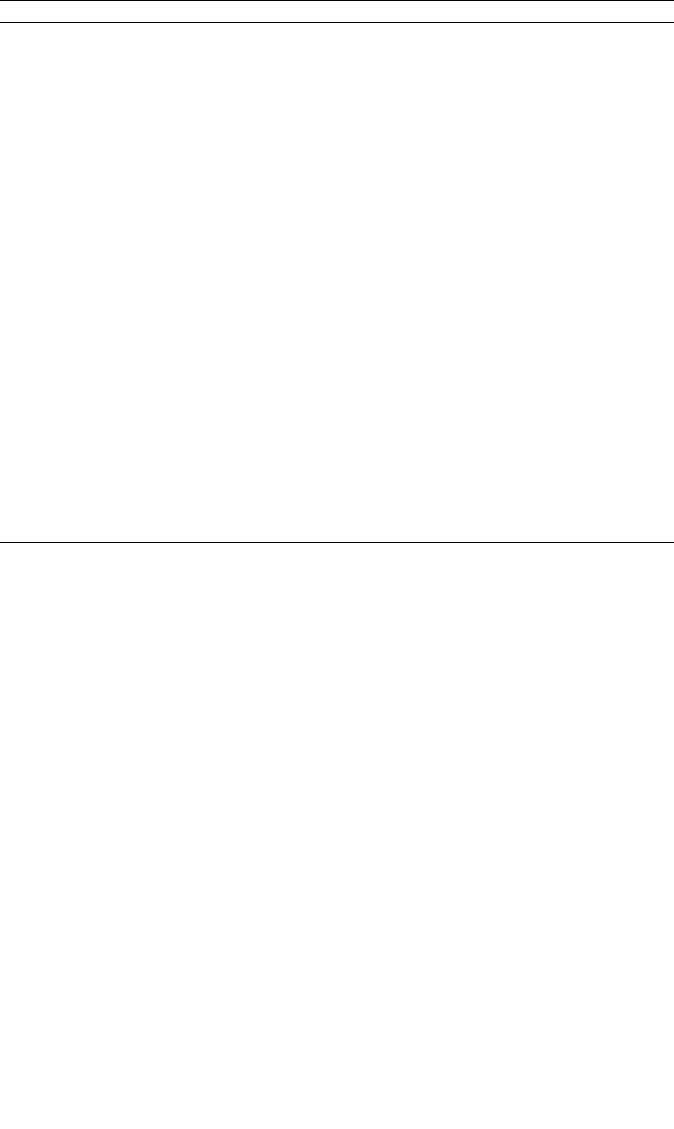
INSURING INTENTIONAL TORTS ARTICLE (FINAL) (DO NOT DELETE) 6/1/2015 9:09 AM
Winter 2012 INTENTIONAL TORT INSURANCE 67
punitive damages are intended to punish the wrongdoer and deter others
from such misconduct.
10
Thus, such goals allegedly would be thwarted if a
policyholder were indemnified by its insurer for such damages.
11
Similarly, some courts have held that a policyholder will not be
covered by an insurance policy for criminal conduct because of the scienter
requirement of criminal acts (i.e., the person who commits the crime
intended to commit the crime).
12
So, it looks like this “myth” that a policyholder cannot recover
insurance for intentional injuries or damage is not a myth at all, but reality,
right? Not so fast. As Cicero is often quoted as saying, the exception
proves the rule.
13
In this instance, the exception swallows the rule.
There are an array of intentional torts for which insurance coverage is
expressly provided under liability policies.
14
For example, insurance
coverage is available for defamation,
15
disparagement,
16
trademark
10
. See, e.g., Nw. Nat’l Cas. Co. v. McNulty, 307 F.2d 432, 434 (5th Cir. 1962) (disallowing
insurance for punitive damages awarded on the theory that such coverage would thwart the purposes of
punitive damage awards—to punish and to deter); U.S. Concrete Pipe Co. v. Bould, 437 So. 2d 1061,
1064 (Fla. 1983) (“The Florida policy of allowing punitive damages to punish and deter those guilty of
aggravated misconduct would be frustrated if such damages were covered by liability insurance.”).
11
. U.S. Concrete Pipe Co., 437 So. 2d at 1064.
12
. See, e.g., Bohrer v. Church Mut. Ins. Co., 965 P.2d 1258, 1262 (Colo. 1998) (“[I]t is contrary
to public policy to insure against liability arising directly against the insured from intentional or willful
wrongs, including the results and penalties of the insured’s own criminal acts.”); Everglades Marina,
Inc. v. Am. E. Dev. Corp., 374 So. 2d 517, 519 (Fla. 1979) (“[P]ublic policy precludes recovery under
an insurance policy when the insured has committed a criminal act with known and necessary
consequences.”); Goldsmith v. Green, 47 So. 3d 637, 641 (La. Ct. App. 2010) (“[N]o reasonable
policyholder would expect for his own intentional criminal acts to be insured . . .”); Perreault v. Maine
Bonding & Cas. Co., 568 A.2d 1100, 1102 (Me. 1990) (denial of coverage “in accord with the general
rule that insurance to indemnify an insured against his or her own violation of criminal statutes is
against public policy and, therefore, void.”).
13
. M. Tullius Cicero, For Cornelius Balbus, available at http://www.perseus.tufts.edu/hopper/
text?doc=Perseus:text:1999.02.0020:text=Balb.:chapter=14).
14
. See N. Bank v. Cincinnati Ins. Companies, 125 F.3d 983, 986–87 (6th Cir. 1997) (rejecting
insurers’ argument that an umbrella policy covered only unintentional torts where the policy defined
“personal injury” to include “inherently intentional” torts such as false arrest, false imprisonment,
detention, malicious prosecution, humiliation, libel, slander, defamation of character, assault and battery
and discrimination); Cincinnati Ins. Co. v. Zen Design Grp., Ltd., 329 F.3d 546, 546 (6th Cir. 2003)
(duty to defend exists for underlying trademark and trade dress infringement claims); Lime Tree Vill.
Cmty. Club Ass’n v. State Farm Gen. Ins. Co., 980 F.2d 1402, 1404 (11th Cir. 1993) (duty to defend
triggered by allegations in complaint that policyholder had falsely and maliciously slandered or
disparaged homeowners’ titles); Union Camp Corp. v. Cont’l Cas. Co., 452 F. Supp. 565, 565 (S.D. Ga.
1978) (coverage for employment discrimination liability does not violate public policy); Imperial Cas.
and Indem. Co. v. State of Conn., 714 A.2d 1230, 1237–39 (Conn. 1998) (policy targeted to law
enforcement including coverage for intentional torts permissible); Bailer v. Erie Ins. Exch., 687 A.2d
1375, 1376; 1384–85 (Md. 1997) (intentional tort of invasion of privacy covered despite “expected or
intended” exclusion); Fluke Corp. v. Hartford Accident & Indem. Co., 34 P.3d 809, 814 (Wash. 2001)
(concluding that coverage for malicious prosecution does not violate public policy).
15
. Ind. Ins. Co. v. N. Vermillion Cmty. Sch. Corp., 665 N.E.2d 630, 635 (Ind. Ct. App. 1996)
(duty to defend arose for claims alleging slander and libel); Cmty. TV Corp v. Twin City Fire Ins. Co.,
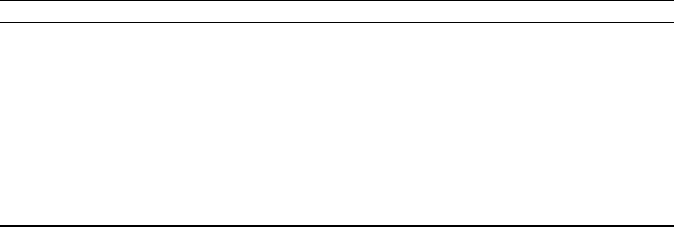
INSURING INTENTIONAL TORTS ARTICLE (FINAL) (DO NOT DELETE) 6/1/2015 9:09 AM
68 HASTINGS BUSINESS LAW JOURNAL Vol. 8:1
infringement,
17
misappropriation of style doing business,
18
unfair
competition,
19
infringement of copyright, title or slogan,
20
false
15 Mass. Law Rptr. 435, 439 (Mass. Super. Ct. 2002) (although insured did not expressly allege
defamation as a cause of action, duty to defend arose where alleged facts constituted defamatory act);
McCormack Baron Mgmt. Serv. Inc. v. Am. Guar. & Liab. Ins. Co., 989 S.W.2d 168, 170 (Mo. 1999)
(recognizing in defamation case that so long as “the complaint merely alleges facts that give rise to a
claim potentially within the policy’s coverage, the insurer has a duty to defend.”); Town of Massena v.
Healthcare Underwriters Mut. Ins. Co., 779 N.E.2d 167, 171–72 (N.Y. 2002) (finding insurer had duty
do defend in defamation case); Butts v. Royal Vendors, Inc., 504 S.E. 2d 911, 916 (W. Va. 1998)
(finding a duty to defend in a defamation case where elements in complaint “are reasonably susceptible
of an interpretation that the claim may be covered by the terms of the insurance policies.”).
16
. See, e.g., Microtec Research v. Nationwide Mut. Ins. Co., 40 F.3d 968, 972 (9th Cir. 1994)
(holding insurance policy provided coverage for disparagement and comparing defamation to
disparagement and noting that “[disparagement] is more akin to unfair competition than to true libel.”);
Lime Tree Vill. Cmty. Club Ass’n, 980 F.2d 1402 (duty to defend triggered by allegations in complaint
that policyholder had falsely and maliciously slandered or disparaged homeowners’ titles); Atl. Mut.
Ins. Co. v. J. Lamb, Inc., 100 Cal. App. 4th 1017, 1035 (2002) (“Whether characterized as a trade libel
or product disparagement, an injurious falsehood directed at the organization or products, goods, or
services of another falls within the coverage of the . . . policy.”); Perkins Ins. Co. v. Phelan, 799 N.E.2d
523, 527 (Ill. App. Ct. 2003) (upholding insurance coverage where defendant’s statements were specific
to plaintiff, they misled, and they tended to influence the consuming public not to buy plaintiffs’
services).
17
. See, e.g., Cincinnati Ins. Co. v. Zen Design Group, Ltd., 329 F.3d 546, 546 (6th Cir. 2003);
CAT Internet Svcs. v. Providence Wash. Ins. Co., 333 F.3d 138, 143 (3d Cir. 2002) (“[i]t makes sense
that a trademark infringement action would be covered by an insurance policy that applies to
‘misappropriation of advertising ideas’ because a trademark is an advertising idea that may be created
and ‘owned,’ and thus wrongfully taken or ‘stolen’”); American Emp’rs Ins. Co. v. Delorme Publ’g.
Co., 39 F. Supp. 2d 64, 77 (D. Me. 1999) (an action for trademark infringement can be described as an
action for “infringement of a copyright, title, or slogan,” and is covered by the policy); Poof Toy Prod.
v. U.S. Fid. & Guar. Co., 891 F. Supp. 1228, 1234 (E.D. Mich. 1995) (finding infringement of:
trademark and trade dress, copyright, and title or slogan as defined in the insurance policy as
advertising injuries, which brings the suit within the policy’s coverage); Kim Seng Co. v. Great Am.
Ins. Co. of New York, 101 Cal. Rptr. 3d 537, 543 (Cal. Ct. App. 2009) (“advertising injury” coverage
extends to the infringement of a trademark).
18
. See, e.g., Cincinnati Ins. Co., 329 F.3d at 546 (duty to defend exists for underlying trademark
and trade dress infringement claims); Hyman v. Nationwide Mut. Fire Ins. Co., 304 F.3d 1179, 1183
(11th Cir. 2002); Elcom Tech.s, Inc. v. Hartford Ins. Co., 991 F. Supp. 1294, 1297 (D. Utah 1997)
(recognizing insurance coverage for misappropriation of style of doing business, but noting “whether or
not particular acts constitute a company’s style of doing business varies with the facts of each case”);
Australia Unlimited, Inc. v. Hartford Cas. Ins. Co., 198 P.3d 514, 519–20 (Wash. Ct. App. 2008)
(applying misappropriation of style of doing business coverage to trade dress claim and noting that
“numerous courts” have included trade dress as covered under policies as a part of misappropriation of
advertising or style of doing business).
19
. See, e.g., Granite State Ins. Co. v. Aamco Transmissions, 57 F.3d 316, 320 (3d Cir. 1995) ( a
competitor of the insured, but not its customer, can assert a claim which may be covered under the
“unfair competition” category of the “advertising injury” coverage); Liberty Life Ins. Co. v.
Commercial Union Ins. Co., 857 F.2d 945, 950 (4th Cir. 1988); America Cynamid Co. v. Am. Home
Assurance Co., 35 Cal. Rptr. 2d 920, 924 (Cal. Ct. App. 1994) (duty to defend triggered where element
of competition or rivalry in marketplace between parties); Smartfoods, Inc. v. Northbrook Prop. & Cas.
Co., 618 N.E.2d 1365, 1368–69 (Mass. App. Ct. 1993) (recognizing coverage for unfair competition,
but limiting “unfair competition” to common law interpretation of “palming off”); Henderson v. United
States Fid. & Guar. Co., 488 S.E.2d 234, 239–40 (N.C. 1997) (in addressing protection for unfair
competition in insurance policy, noting that policy covers both common law and statutory interpretation
of unfair competition).

INSURING INTENTIONAL TORTS ARTICLE (FINAL) (DO NOT DELETE) 6/1/2015 9:09 AM
Winter 2012 INTENTIONAL TORT INSURANCE 69
imprisonment,
21
employment discrimination,
22
wrongful termination,
23
wrongful eviction,
24
malicious prosecution,
25
and invasion of privacy.
26
20
. See, e.g., Colony Ins. Co. v. Corrosion Control, Inc., 187 Fed. App’x 918, 919 (11th Cir. 2006)
(policy provided coverage for, inter alia, infringement of copyright, title, or slogan); Sport Supply
Group, Inc. v. Columbia Cas. Co., 335 F.3d 453, 456 (5th Cir. 2003) (recognizing policy covered
infringement of copyright, title, or slogan); Maxconn, Inc. v. Truck Ins. Exch., 88 Cal. Rptr. 2d 750,
755–56 (Cal. Ct. App. 1999) (noting policy covered infringement of copyright, title, or slogan); ABB
Flakt, Inc. v. Nat’l Union Fire Ins. Co., 731 A.2d 811, 814 (Del. 1999); Myoda Computer Ctr., Inc. v.
Am. Family Mut. Ins. Co., 909 N.E.2d 214, 216 (Ill. Ct. App. 2009) (policy covered “advertising
injury” including the offense of infringement of copyright, title, or slogan).
21
. See, e.g., First Specialty Ins. Corp. v. 633 Partners, Ltd., 300 Fed. App’x 777, 785 (11th Cir.
2008) (in the absence of clear evidence that exclusion applies, insurer had duty under policy to defend
claim of false imprisonment); Nat’l Fire & Cas. Co. v. West, 107 F.3d 531, 533 (7th Cir. 1997)
(employer’s liability policy covered false imprisonment committed in the conduct of the named
insured’s operations); Dixon Distrib. Co. v. Hanover Ins. Co., 641 N.E.2d 395, 398 (Ill. 1994)
(umbrella policy covered false imprisonment); Travelers Indem. Co. v. Thomas, 315 So. 2d 111, 113–
14 (Fla. Dist. Ct. App. 1975) (duty to defend insured in false imprisonment matter where the complaint
contained allegations partially within the scope of the coverage); Edquist v. Ins. Co. of N. Am., No. C6-
95-1111, 1995 Minn. App. LEXIS 1350 (Minn. Ct. App. Oct. 31, 1995) (recognizing that “the tort of
false imprisonment does not require the actor to intend the injury, but only requires the actor to intend
to confine”).
22
. See, e.g., Union Camp. Corp., 452 F. Supp. at 565 (coverage for employment discrimination
liability does not violate public policy).
23
. See, e.g., St. Paul Guardian Ins. Co. v. Centrum Gs Ltd., 283 F.3d 709, 713 (5th Cir. 2002)
(wrongful termination claim covered under personal injury definition set forth in policy); CIM Ins.
Corp. v. Midpac Auto Ctr., Inc., 108 F. Supp. 2d 1092, 1100 (D. Haw. 2000) (coverage for wrongful
termination, but not for damages arising out of breach of contract, such as employment contract); Wells
Fargo Bank v. California Ins. Guar. Assn., 45 Cal Rptr. 2d 537, 537 (Cal. Ct. App. 1995) (umbrella
coverage for wrongful termination); Smith v. Animal Urgent Care, Inc., 542 S.E.2d 827, 831, n.10 (W.
Va. 2000) (noting availability of employment practices liability insurance covering wrongful
termination).
24
. See, e.g., Century Sur. Co. v. Seductions, LLC, 349 Fed. App’x 455, 459 (11th Cir. 2009)
(recognizing insurance coverage for wrongful eviction, but noting split in necessity of possessory
interest to raise claim); Nautilus Ins. Co. v. BSA Ltd. P’ship, 602 F. Supp. 2d 641, 656 (D. Md. 2009)
(coverage defining personal and advertising injury to include wrongful eviction); Westfield Ins. Group
v. J.P.’s Wharf, LTD, 859 A.2d 74, 75 (Del. 2004) (recognizing insurance coverage for wrongful
eviction, but not applying coverage as plaintiffs did not have a possessory interest); Dixon Distrib. Co.
v. Hanover Ins.Co., 641 N.E.2d 395, 398 (Ill. 1994); Sallie v. Tax Sale Investors, 814 A.2d. 572, 574
(Md. App. 2002) (“[C]overage for the wrongful eviction may exist if there is a sufficient connection
between the wrongful eviction and … the operation of, or operations incidental to, the designated
premises.”).
25
. See, e.g., Global NAPs, Inc. v. Fed. Ins. Co., 336 F.3d 59 (1st Cir. 2003) (recognized that
policy covered malicious prosecution); Atlantic Mut. Ins. Co. v. Atlanta Datacom, 139 F.3d 1344, 1346
(11th Cir. 1998) (recognizing policy covered malicious prosecution, but noting that malicious
prosecution under Georgia law is limited to the pursuit of criminal actions); City of Erie v. Guaranty
Nat’l Ins. Co., 935 F. Supp. 610, 615 (W.D. Pa. 1996) (duty to defend in malicious prosecution matter
is triggered when first criminal charges were filed); Lincoln Nat’l Health & Casualty Ins. Co. v. Brown,
782 F. Supp. 110, 112–13 (M.D. Ga. 1992) (where policy specifically includes malicious prosecution as
a covered action, provision limiting coverage to unintentional acts does not apply); Fluke Corp. v.
Hartford Accident & Indem. Co., 34 P.3d 809, 814 (Wash. 2000) (concluding that coverage for
malicious prosecution does not violate public policy).
26
. See, e.g., Universal Underwriters Ins. Co. v. Lou Fusz Auto. Network, Inc., 401 F.3d 876, 883
(8th Cir. 2005) (finding no support in policy for limiting the interpretation of the term “invasion of
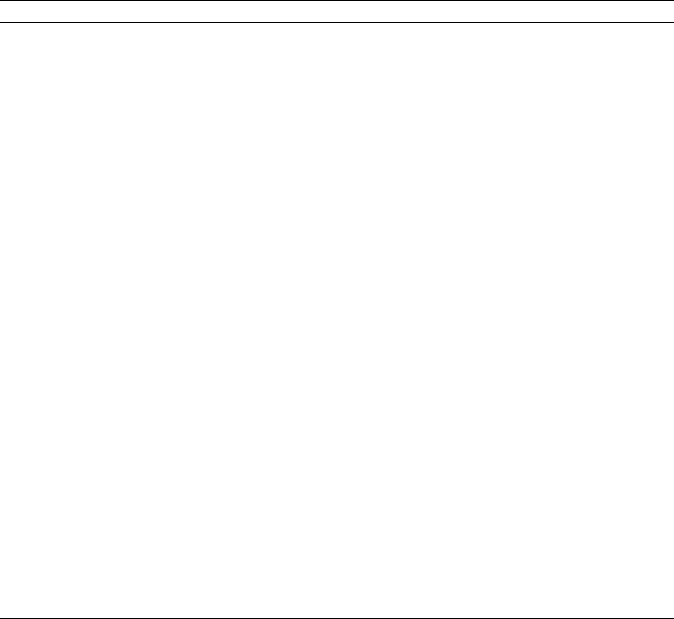
INSURING INTENTIONAL TORTS ARTICLE (FINAL) (DO NOT DELETE) 6/1/2015 9:09 AM
70 HASTINGS BUSINESS LAW JOURNAL Vol. 8:1
Under well-established insurance policy interpretation principles such
as contra proferentum and the “reasonable expectations” doctrine, insurers
cannot escape their coverage obligations for these types of claims based
upon the “expected or intended” exclusion or the fortuity doctrine even
though these types of claims result in injuries or damages that typically are
intentionally caused by the policyholder because the policyholder
reasonably expects that the coverage the insurer expressly agreed to
provide will, in fact, be provided.
27
In addition, numerous courts have held that insurance coverage is
available for injuries intentionally inflicted by the policyholder in, for
example, self-defense, even though the policyholder “expected or
intended” to injure his assailant.
28
Further, although some courts have held that a policyholder cannot
insure against punitive damages, the majority of courts have held just the
opposite; namely, that a policyholder can obtain coverage for punitive
damages unless such damages are expressly excluded under the policy at
issue.
29
The Oregon Supreme Court’s discussion of the issue is emblematic
privacy” and ordinary, lay definitions must be apply); Lineberry v. State Farm Fire & Cas. Co., 885 F.
Supp. 1095, 1099 (M.D. Tenn. 1995) (insurer cannot escape explicit coverage for invasion of privacy
by reference to exclusion for injuries that were intended or expected); Purrelli v. State Farm Fire & Cas.
Co., 698 So. 2d 618, 619–620. (Fla. Dist. Ct. App. 1997); Bailer v. Erie Ins. Exch., 687 A.2d 1375,
1376, 1384–85 (Md. 1997) (intentional tort of invasion of privacy covered despite “expected or
intended” exclusion); United States Fire Ins. Co. v. St. Paul Fire & Marine Ins. Co., 511 N.E.2d 127,
129 (Ohio Ct. App. 1986) (duty to defend claim which “potentially” or “arguably” would fall under
coverage for invasion of privacy).
27
. See infra notes 65 and 71.
28
. See generally John D. Ingram, The Expected or Intended Exclusion in Liability Insurance:
What About Self-Defense?, 42 CREIGHTON L. REV. 123 (2009). See also State Farm Fire & Cas. Co. v.
Poomaihealani, 667 F. Supp. 705, 708 (Dist. Haw. 1987) (“when faced with a harm-threatening
situation, the decision to defend one’s self is not a choice. It is an instinctive necessity.”); Fire Ins.
Exch. v. Berray, 694 P.2d 191, 193 (Ariz. 1984) (“an act committed in self-defense should not be
considered an ‘intentional act’ within the meaning of the [liability insurance policy’s] exclusion.”);
Transamerica Ins. Group v. Meere, 694 P.2d 181, 188 (Ariz. 1984) (“when one acts in self-defense the
actor is not generally acting for the purpose of intending any injury to another but, rather, is acting for
the purpose of attempting to prevent injury to himself.”); Preferred Mut. Ins. Co. v. Thompson, 491
N.E.2d 688, 691 (Ohio 1986) (neither the deterrence factor nor any other interest of “public policy is
served by application of the exclusion to an insured who claims to have acted in self-defense.”);
Stoebner v. S.D. Farm Bureau Mut. Ins. Co., 598 N.W.2d 557, 560 (S.D. 1999) (a person “acting in
self-defense is . . . not acting unreasonably . . . [and] is not engaging in the type of conduct that
intentional acts exclusions are intended to discourage.”); Farmers & Mechanics Mut. Ins. Co. of W. Va.
v. Cook, 557 S.E.2d 801, 810 (W. Va. 2001) (“[A] loss which results from an act committed by a
[liability insurance] policyholder in self-defense or in defense of another is not, as a matter of law,
expected or intended by the policyholder.”); Berg v. Fall, 405 N.W.2d 701, 704 (Wis. Ct. App. 1987) (a
liability insurance policy’s provision that excluded coverage for damage or injury intended or expected
by the insured was “not clear as to whether it covers bodily injury caused by privileged acts of self-
defense.”).
29
. See generally Appleman and Appleman, supra note 9, § 7031; Steven Pitt et. al, supra note 9,
§ 101:29; Catherine M. Sharkey, Calabresi’s The Costs of Accidents: A Generation of Impact on Law
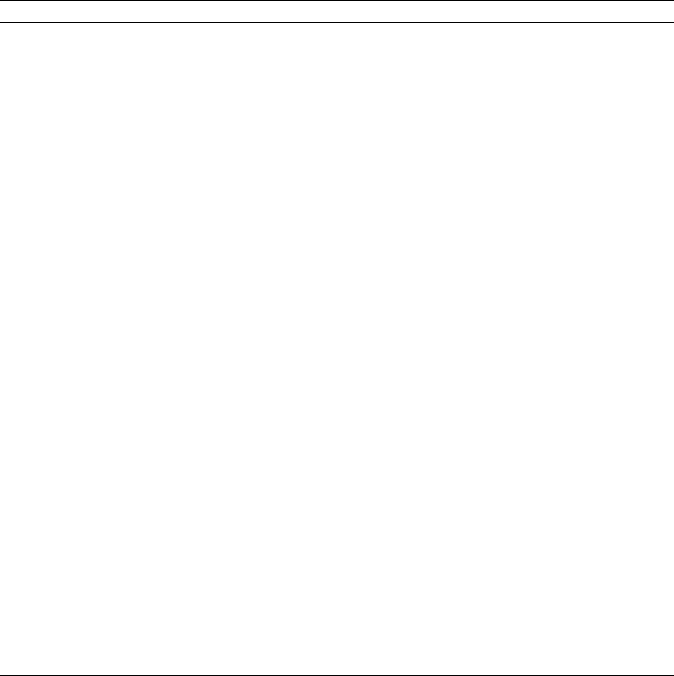
INSURING INTENTIONAL TORTS ARTICLE (FINAL) (DO NOT DELETE) 6/1/2015 9:09 AM
Winter 2012 INTENTIONAL TORT INSURANCE 71
of the reasoning of such courts:
It has long been recognized that there is no empirical evidence that
contracts of insurance to protect against liability for negligent conduct
are invalid, as a matter of public policy, because of any ‘evil tendency’
to make negligent conduct ‘more probable’ or because there is any
‘substantial relationship’ between the fact of insurance and such
negligent conduct . . . Conversely, neither is there any such evidence
that to invalidate insurance contract provisions to protect against
liability for punitive damages on grounds of public policy would have
any substantial ‘tendency’ to make such conduct ‘less probable,’ i.e.,
that to do so would have any ‘deterrent effect’ whatever upon such
conduct.
30
Similarly, the Wyoming Supreme Court has noted, “we know of no
studies, statistics or proofs which indicate that contracts of insurance to
protect against liability for punitive damages have a tendency to make
willful or wanton misconduct more probable, nor do we know of any
substantial relationship between the insurance coverage and such
misconduct.”
31
Other courts have reasoned that insurance does not alter the deterrent
effects of punitive damages, because insurers can raise premiums after
and Scholarship: Revisiting the Non-Insurable Costs of Accidents, 64 MD. L. REV. 409, 409 (2005);
George L. Priest, Insurability and Punitive Damages, 40 ALA. L. REV. 1009, 1031 (1989). See also
Randall v. Chevron U.S.A., Inc., 13 F.3d 888, 910 (5th Cir. 1994) (Louisiana law), cert. denied, 115 S.
Ct. 498 (1994); Meijer, Inc. v. General Star Indem. Co., 826 F. Supp. 241, 246 (W.D. Mich. 1993)
(Michigan law), aff’d, 61 F.3d 903 (6th Cir. 1995); American Fidelity & Cas. v. Werfel, 164 So. 383,
385 (Ala. 1935); Aetna Cas. & Sur. Co. v. Marion Equip. Co., 894 P.2d 664, 671 (Alaska 1995); Price
v. Hartford Accident & Indem. Co., 502 P.2d 522, 525 (Ariz. 1972); S. Farm Bureau Cas. Ins. Co. v.
Daniel, 440 S.W.2d 582, 584 (Ark. 1969) (punitive damages coverage available for accidents);
Greenwood Cemetery, Inc. v. Travelers Indem. Co., 232 S.E.2d 910, 915 (Ga. 1977); Abbie Uriguen
Oldsmobile Buick, Inc. v. United States Farm Ins. Co., 511 P.2d 783, 789 (Idaho 1973); Skyline
Harvestore Sys., Inc. v. Centennial Ins. Co., 331 N.W.2d 106, 109 (Iowa 1983); Cont’l Ins. Co. v.
Hancock, 507 S.W.2d 146, 151 (Ky. 1973); Sharp v. Daigre, 555 So.2d 1361, 1364 (La. 1990); First
Nat’l Bank v. Fidelity & Deposit Co., 389 A.2d 359, 360 (Md. 1978); James W. Sessums Timber Co.,
Inc. v. McDaniel, 635 So.2d 875, 884 (Miss. 1994); Anthony v. Frith, 394 So.2d 867, 868 (Miss. 1981);
First Bank (N.A.) – Billings v. Transamerica Inc. Co., 679 P.2d 1217, 1223 (Mont. 1984) (but see
MONT. CODE ANN. § 33-15-317 (1989) (limiting coverage for punitive damages)); Baker v. Armstrong,
744 P.2d 170, 174 (N.M. 1987); Mazza v. Medical Mut. Ins. Co., 319 S.E.2d 217, 219 (N.C. 1984);
Harrell v. Travelers Indem. Co., 567 P.2d 1013, 1017 (Or. 1977); S.C. State Budget & Control Bd. v.
Prince, 403 S.E.2d 643, 644 (S.C. 1991); Lazenby v. Universal Underwriters Ins. Co., 383 S.W.2d 1, 5
(Tenn. 1964); Dairyland County Mut. Ins. Co. v. Wallgren, 477 S.W.2d 341, 342 (Tex. App. 1972);
American Protection Ins. Co. v. McMahan, 562 A.2d 462, 466–67 (Vt. 1989); Sinclair Oil Co. v.
Columbia Cas. Co., 682 P.2d 975, 981 (Wyo. 1984); Hensley v. Erie Ins. Co., 283 S.E.2d 227, 233 (W.
Va. 1981).
30
. Harrell v. Travelers Indem. Co., 567 P.2d 1013, 1017 (Or. 1977).
31
. Sinclair Oil Corp., 682 P.2d at 981; see also Skyline Harvestore Sys., Inc. v. Centennial Ins.
Co., 331 N.W.2d 106, 109 (Iowa 1983) (“We doubt that ordinary potential tortfeasors make calculations
to determine if the expected benefits of a harmful act are outweighed by the potential costs of punitive
damages, insured or uninsured.”).

INSURING INTENTIONAL TORTS ARTICLE (FINAL) (DO NOT DELETE) 6/1/2015 9:09 AM
72 HASTINGS BUSINESS LAW JOURNAL Vol. 8:1
awards or generally build the expected cost of punitive damages into their
premiums.
32
Moreover, even in jurisdictions where courts generally have held that
punitive damages are uninsurable, most of them still allow punitive
damages to be covered by insurance if the award of the punitive damages is
based upon vicarious liability.
33
In essence, the courts’ reasoning is that a
person or company that is held liable for the conduct of one of its agents
did not intend the harm or damage, so why should it be required to forfeit
its insurance coverage.
34
In addition, arguments asserting that public policy allegedly disfavors
allowing insurance for injuries or damages intentionally caused are not well
founded. Other than in the context of committing insurance fraud there is
little, if any, evidence that establishes that policyholders engage in reckless
behavior or intentionally cause injuries or damages because they are
insured. Indeed, there are many deterrents to bad behavior unrelated to
insurance. For example, assault and battery are criminal offenses that can
result in jail time. Thus, it seems unlikely that the loss of insurance to
cover the injuries caused by a policyholder’s assault/battery on a victim
would be more of a deterrent than the prospect of prison. Similarly,
32
. See, e.g., Price v. Hartford Accident & Indem. Co., 502 P.2d 522, 524 (Ariz. 1972) (reasoning
that even with liability insurance a tortfeasor would still be subjected to considerable automobile
insurance premiums, as well as facing possible criminal actions and loss of license); First Nat’l Bank v.
Fid. & Deposit Co., 389 A.2d 359, 366 (Md. 1978) (“Those who are demonstrated by experience to be
poor risks encounter substantial difficulty in obtaining insurance, a fact such persons know.”). See also
2 LEE R. RUSS & THOMAS F. SEGALIA, COUCH ON INSURANCE § 101:29 (3d ed. 1999) (noting that the
deterrence argument “underestimates the impact that a large payment by an insurer would have on the
insured’s ability to obtain future insurance coverage, and the amount of premiums that would have to be
paid”). Notably, Professor Calabresi, one of the founders of the law and economics movement, rejected
this rationale on two grounds. First, he argued that “the manner in which insurance rates change as a
result of accidents clearly is so haphazard and arbitrary under the fault system that the possibility of rate
increases cannot conceivably be as good a collective deterrent as an intelligently fixed noninsurable
fine.” GUIDO CALABRESI, THE COSTS OF ACCIDENTS: A LEGAL AND ECONOMIC ANALYSIS 271, n.6
(1970). Second, he noted that “even this risk of going into a higher risk actuarial subcategory by reason
of accident involvement could conceivably by insured against.” Id. at 125 n.23.
33
. See ROBERT H. JERRY II, UNDERSTANDING INSURANCE LAW 352 (Barry R. Ostranger &
Thomas R. Newman eds., 1st ed. 1987) (punitive damages are insurable in two-thirds of the states that
have considered the issue); Michael A. Rosenshouse, Liability Insurance Coverage as Extending for
Punitive or Exemplary Damages, 16 A.L.R. 4th 11 (1982) (listing the various approaches taken by
different states); Ohio Cas. Ins. Co. v. Welfare Fin. Co., 75 F.2d 58 (8th Cir. 1934), cert. denied, 295
U.S. 734 (1935); U.S. Fid. & Guar. Co. v. Open Sesame Child Care Ctr., 819 F. Supp. 756 (N.D. Ill.
1993); Norfolk & W. Ry. Co. v. Hartford Accident & Indem. Co., 420 F. Supp. 92 (N.D. Ind. 1976);
Highlands Ins. Co. v. McCutchen, 486 So.2d 4 (Fla. Dist. Ct. App. 1986); Scott v. Instant Parking, Inc.,
245 N.E.2d 124 (Ill. App. 1969); S. Am. Ins. Co. v. Gabbert-Jones, Inc., 769 P.2d 1194 (Kan. Ct. App.
1989); Malanga v. Mfr. Cas. Ins. Co., 146 A.2d 105 (N.J. 1958); Dayton Hudson Corp. v. Am. Mut.
Liab. Ins. Co., 621 P.2d 1155 (Okla. 1980); Butterfield v. Giuntoli, 670 A.2d 646 (Pa. Super. Ct. 1996),
appeal denied, 683 A.2d 875 (Pa. 1996).
34
. See sources cited supra note 33.
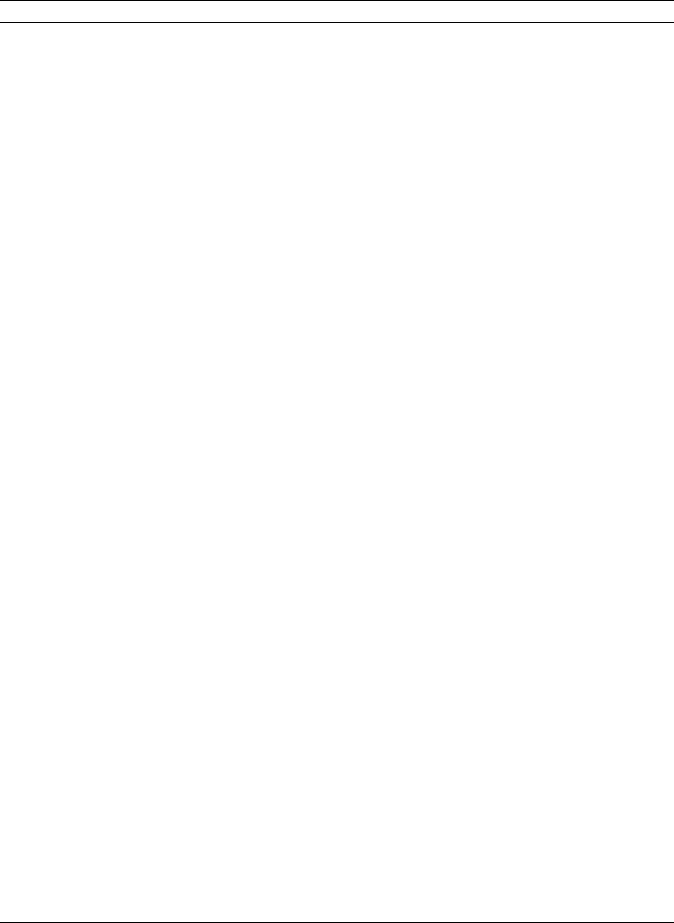
INSURING INTENTIONAL TORTS ARTICLE (FINAL) (DO NOT DELETE) 6/1/2015 9:09 AM
Winter 2012 INTENTIONAL TORT INSURANCE 73
because imprisonment is a meaningful punishment for a crime, it is not as
though a policyholder that commits assault and battery will go unpunished
if his insurer compensates the victim for his injuries.
On the other hand, there are sound public policy reasons that support
allowing insurance for intentional injuries or damage. For example, public
policy dictates that victims should be compensated for their injuries.
35
In
many circumstances, the tortfeasor’s insurance may be the only source of
compensation for the injured person. In addition, public policy supports
enforcing the terms of contracts, such as those found in insurance
policies.
36
Thus, if insurers do not want to insure intentional injuries or
damage, then, as the drafters of insurance policies, they should make it
crystal clear in their policies that intentional injuries or damage are not
covered.
In exposing the myth that insurance is not available to cover
intentional injuries or damage, this article is divided into four parts. Part
One discusses the fortuity doctrine and the “expected or intended”
exclusion, which are the foundations of the myth that insurance is not
available for intentional injuries or damages. Part Two discusses certain
principles of insurance policy interpretation, such as contra proferentum
and the “reasonable expectations” doctrine, and how such principles apply
to insurance claims for intentional injuries or damage. Part Three discusses
examples of the numerous types of intentional torts that are covered by
insurance, as well as insurance coverage for punitive damages. Part Four
discusses the public policy arguments in favor of and against insuring
intentional injuries or damages and whether courts, as opposed to
legislatures, should even be attempting to discern the controlling public
policy in this area. Finally, the article concludes that public policy favors
allowing insurance recoveries for intentional injuries or damage.
35
. See, e.g., Leland R. Gallaspy, Breland v. Schilling: Louisiana’s Approach to “Injuries
Expected or Intended from the Standpoint of the Insured, 52 LA. L. REV. 199, 200 (1991); Cuttler,
supra note 6, at 158; Appleman and Appleman, supra note 9, § 4252.
36
. See, e.g., Nw. Nat’l Cas. Co. v. McNulty, 307 F.2d 432, 333 (5th Cir. 1962) (Gewin, J.,
Concurring) (noting the public policy for favoring the enforcement of contracts); Accord Sch. Dist. for
the City of Royal Oak v. Cont’l Cas. Co., 912 F.2d 844, 848 (6th Cir. 1990), reh’g denied, 921 F.2d 625
(6th Cir. 1990) (public policy favors enforcing the terms of insurance policies and “common sense
suggests that the prospect of escalating insurance costs and the trauma of litigation, to say nothing of
the risk of uninsurable punitive damages, would normally neutralize any stimulative tendency that
insurance might have.”); Continental Cas. Co., 912 F.2d at 849 (“Public policy normally favors
enforcement of insurance contracts according to their terms.”) (citing Ranger Ins. Co. v. Bal Harbour
Club, Inc., 549 So.2d 1005, 1010 n.1 (Fla. 1989) (Ehrlich, C.J., dissenting)); Union Camp Corp v.
Cont’l Cas. Co., 452 F. Supp. 565, 568 (Ga. 1978) (“Exercise of the freedom of contract is not lightly to
be interfered with. It is only in clear cases that contracts will be held void as against public policy.”);
Creech v. Aetna Cas. & Sur. Co., 516 So.2d 1168, 1174 (La. Ct. App. 1987).
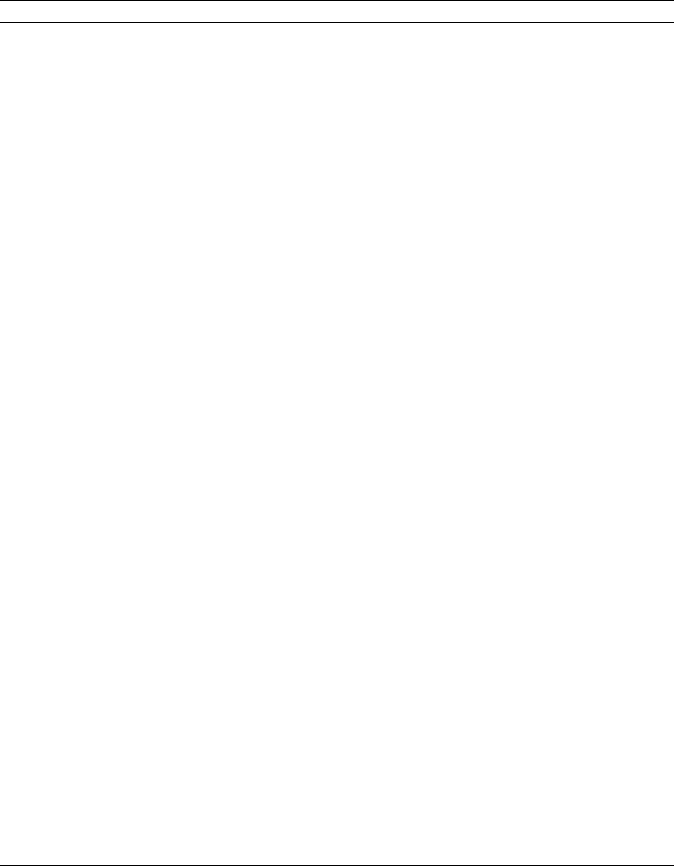
INSURING INTENTIONAL TORTS ARTICLE (FINAL) (DO NOT DELETE) 6/1/2015 9:09 AM
74 HASTINGS BUSINESS LAW JOURNAL Vol. 8:1
II. THE FORTUITY DOCTRINE
The fortuity doctrine first appeared in the property insurance context
and essentially provides that that insurance only covers “fortuitous” losses.
Quoting Webster’s Third New International Dictionary, the Supreme Court
of North Carolina has explained the meaning of fortuity as follows:
The word “fortuitous” means “occurring without evidential causal need
or relation or without deliberate intention.”
37
The Supreme Court of
North Carolina further explained that a fortuitous event is an event that
is “not certain to occur.”
38
Other courts have described “fortuity” as
“the loss of property or possession by some unexpected acts;”
39
“an
event dependent on chance;”
40
a “happening by accident or chance;
unplanned”;
41
and “a casualty.”
42
The Restatement (First) of Contracts defines “fortuity” in the insurance
context as follows:
A fortuitous event . . . is an event which so far as the parties to the
contract are aware, is dependent on chance. It may be beyond the
power of any human being to bring the event to pass; it may be within
the control of third persons; it may even be a past event, such as the
loss of a vessel, provided that the fact is unknown to the parties.
43
The fortuity doctrine made its way into liability policies when it began
being included in the definition of “occurrence.” “Occurrence” often is
defined in liability policies as either “an accident, including continuous or
repeated exposure to conditions, which results in bodily injury or property
damage neither expected nor intended from the standpoint of the insured;
44
or “an accident or happening or event or a continuous or repeated exposure
to conditions which unexpectedly and unintentionally results in . . .
personal injury [or] property damage . . . during the policy period.”
45
37
. Avis v. Hartford Fire Ins. Co., 195 S.E.2d 545, 548 (N.C. 1973).
38
. Id.
39
. Klockner Ltd. v. Ins. Co. of the State if Pa., 760 F. Supp. 148, 157 (S.D.N.Y. 1991) (citing
London Provincial Processes, Ltd. v. Hudson, 21 K.B. 724, 730 (1939)).
40
. See Formosa Plastics Corp. v. Sturge, 684 F. Supp. 359, 367 (S.D.N.Y. 1987) aff’d, 848 F.2d
390 (2d Cir. 1988); Intermetal Mexicana v. Ins. Co. of N. Am., 866 F.2d 71, 77 (3d Cir. 1989); Ins. Co.
of N. Am. v. U.S. Gypsum Co., 870 F.2d 148, 151 (4th Cir. 1989); Standard Structural Steel Co. v.
Bethlehem Steel Corp., 597 F. Supp. 164, 192 (D. Conn. 1984) (quoting Compangnie des Bauzites de
Guinee v. Ins. Co. of N. Am., 554 F. Supp 1080 (W.D.Pa. 1983)).
41
. Nw. Mut. Life Ins. Co. v. Linard, 498 F.2d 556, 563 n.11 (2d Cir. 1974).
42
. Buckeye Cellulose Corp. v. Atl. Mut. Ins. Co., 643 F. Supp. 1030, 1036, 1042 (S.D.N.Y.
1986).
43
. RESTATEMENT (FIRST) OF CONTRACTS § 305 cmt. A (1932). See also Compagnie des Bauxites
de Guinee, 724 F.2d at 372 (3d Cir. 1983); Mattis v. State Farm Fire & Cas. Co., 454 N.E.2d 1156,
1164 (Ill. App. Ct. 1983).
44
. See Malecki, supra note 3, at Appendix A (italics added).
45
. See Bay Cities Paving & Grading v. Lawyers’ Mut. Ins. Co., 855 P.2d 1263, 1269 n.4 (Cal.
1993) (quoting provision from Mich. Chem. Corp. v. Am. Home Assurance Co., 728 F.2d 374, 378 (6th
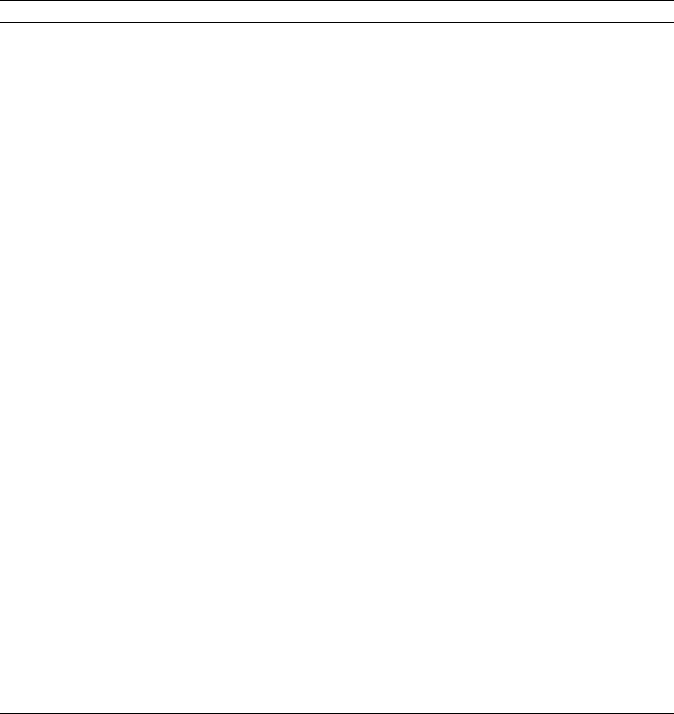
INSURING INTENTIONAL TORTS ARTICLE (FINAL) (DO NOT DELETE) 6/1/2015 9:09 AM
Winter 2012 INTENTIONAL TORT INSURANCE 75
As a belt and suspenders approach to the issue, many liability policies
also include an express exclusion of coverage for injuries that are
“expected or intended” by the policyholder. For example, “[t]his insurance
does not apply to . . . ‘bodily injury’ or ‘property damage’ expected or
intended from the standpoint of the insured.”
46
Thus, in some policies the
“expected or intended” exclusion appears in both the exclusion section and
in the definition of “occurrence.”
A. ISSUES RELATED TO THE APPLICATION OF THE “EXPECTED OR
INTENDED” EXCLUSION
In analyzing whether there is coverage for injuries or damage the
policyholder allegedly caused intentionally, the first thing one must keep in
mind is that the “expected or intended” language contained in liability
policies, whether located in the definition of “occurrence” or in the
exclusions section of the policy, is an exclusion.
47
Thus, this language
should be narrowly construed,
48
and all ambiguities regarding its
interpretation and application should be resolved in favor of the
policyholder.
49
Furthermore, assuming the exclusion has any applicability
to the type of claim at issue, the insurer has the burden of proving the
policyholder expected or intended the harm or damage at issue.
50
Cir. 1984)).
46
. See sources cited supra note 4.
47
. See, e.g., Stonewall Ins. Co. v. Asbestos Claims Mgmt. Corp., 73 F.3d 1178, 1205 (2d Cir.
1995) (insurer has burden of proof regarding exclusionary effect of policy language, regardless of
where the exclusionary language is located in the policy); Upjohn Co. v. Aetna Cas. & Sur. Co., No.
4:88-CV-124, at 29–30 (W.D. Mich. July 22, 1994) (although the “neither expected nor intended”
language appears in the occurrence clause, it essentially operates as an exclusion); Clemco Indus. v.
Commercial Union Ins. Co., 665 F. Supp. 816, 820–21 (N.D. Cal. 1987) (coverage clauses are
interpreted broadly to afford greatest possible protection, therefore the expected or intended” clauses
must be seen as an exclusion clause to be narrowly interpreted); Nat’l Farmers Union Prop. & Cas. Ins.
Co. v. Kovash, 452 N.W.2d 307, 311 n.3 (N.D. 1990) (a determination of coverage under the
“expected or intended” language in the definition of an occurrence generally involves the same
determination as coverage under an exclusion for intentional acts).
48
. See infra note 68.
49
. See infra note 65.
50
. See infra note 68. See also United Equip. Co. v. Aetna Life & Cas. Ins. Co., 376 A.2d 1183,
1187 (N.J. 1977) (“When an insurance carrier puts in issue its coverage of a loss under a contract of
insurance by relying on an exclusionary clause, it bears a substantial burden of demonstrating that the
loss falls outside the scope of coverage.”); SCSC Corp. v. Allied Mut. Ins. Co., 536 N.W.2d 305, 313
(Minn. 1995) (insurer has burden to prove the applicability of an exclusion as an affirmative defense);
Continental Ins. Co. v. Louis Marx & Co., 415 N.E.2d 315, 317 (Ohio 1980) (insurer has burden of
proving defense based upon exclusion); Brown v. Snohomish Physicians Corp., 845 P.2d 334, 340
(Wash. 1993) (once insured has made a prima facie case that there is coverage, burden shifts to the
insurer to prove an exclusionary provision applies). See also Appleman & Appleman, supra note 9, §
7405; RUSS & SEGALLA, supra note 32, § 22:31; 1 BUSINESS INSURANCE LAW AND PRACTICE GUIDE §
2.02[1] (1996).
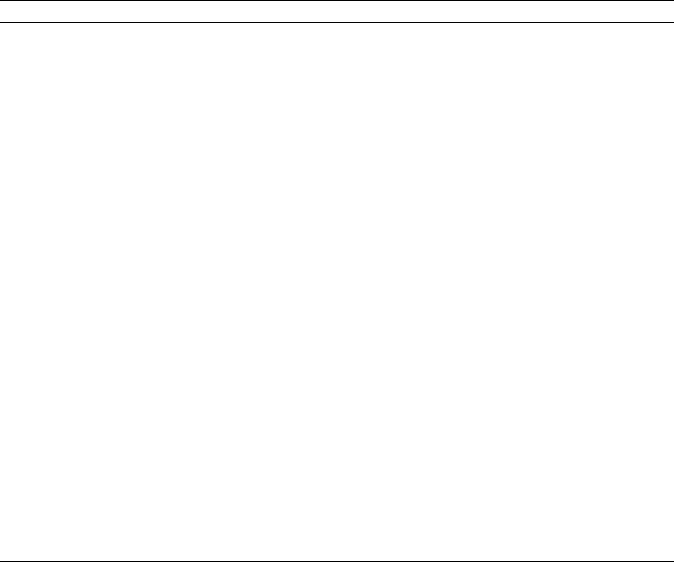
INSURING INTENTIONAL TORTS ARTICLE (FINAL) (DO NOT DELETE) 6/1/2015 9:09 AM
76 HASTINGS BUSINESS LAW JOURNAL Vol. 8:1
1. Objective versus Subjective Standard
Whether based upon the fortuity doctrine, the definition of
“occurrence,” or the “expected or intended” exclusion, when determining
whether the policyholder intended the injury or damage at issue, one must
examine the policyholder’s state of mind. Not all courts are in agreement
regarding whether the test should be whether the policyholder subjectively
expected the act at issue would cause the injury or damage, or whether the
policyholder objectively expected to cause the injury or damage.
51
The
majority of courts that have addressed this issue, however, have adopted a
subjective standard.
52
There are a number of variations of the objective standard. Under one
variation, the question is whether the injury at issue would have been
expected by a “reasonable” person.
53
Under another variation, the question
51
. Compare Royal Indem. Co. v. Soneco/Ne., Inc., 183 F. Supp. 2d 526, 533 (D. Conn. 2002)
(determining intent for the intentionality exclusion “requires the Court to apply a subjective standard);
Coregis Ins. Co. v. Elizabeth Twp., 2007 U.S. Dist. LEXIS 23574, at *12 (W.D. Pa. Mar. 30, 2007)
(“[T]o determine whether an insured intended the harm, courts apply a subjective standard.”); U.S. Fid.
& Guar. Co. v. Armstrong, 479 So. 2d 1164, 1167 (Ala. 1985) (“[T]he legal standard to determine
whether the injury was either expected or intended . . . is a purely subjective standard.”); Fire Ins. Exch.
v. Berray, 694 P.2d 191, 194 (Ariz. 1984) (looks “from standpoint of the insured” at whether the
insured expected or intended to cause injury); Shell Oil Co. v. Winterthur Swiss Ins. Co., 15 Cal. Rptr.
2d 815, 861 (Cal. App. 1993), (rejecting objective “should have known” meaning of expect and instead
adopting its “plain meaning”); State Farm Mut. Auto Ins. Co. v. McMillan, 925 P.2d 785, 793 (Colo.
1996); Great Am. Ins. Co. v. Gaspard, 608 So. 2d 981, 985 (La. 1992) (“[T]he subjective intent of the
insured is the key and not what the average or ordinary reasonable person would expect or intend.”);
Williams v. City of Baton Rouge, 731 So. 2d 240, 253 (La. 1999) (The subjective intent of the insured
will determine whether an act is intentional); Patrons-Oxford Mut. Ins. Co. v. Dodge, 426 A.2d 888,
892 (Me. 1981) (adopting subjective standard and recognizing it as the majority standard); Quincy Mut.
Fire Ins. Co. v. Abernathy, 469 N.E.2d 797, 800 (Mass. 1984) (“Our cases have concluded that an
injury is nonaccidental only where the result was actually, not constructively, intended.”); Arco Indus.
Corp. v. Am. Motorists Ins. Co., 531 N.W.2d 168, 179 (Mich. 1995), overruled on other grounds by
Frankenmuth Mut. Ins. Co. v. Masters, 595 N.W.2d 832 (Mich. 1999) (appellate court should have
adopted a subjective standard); Espinet v. Horvath, 597 A.2d 307, 309 (Vt. 1991) (upholding subjective
standard and rejecting use of objective standard with respect to “inherently dangerous activity” where
such activity was not explicitly excluded by the insurance policy); Queen City Farms v. Cent. Nat’l. Ins.
Co., 882 P.2d 703, 714 (Wash. 1994) (en banc), amended, 891 P.2d 718 (Wash. 1995) (holding that
subjective standard applies where policy is silent and ambiguous on whether standard should be
objective or subjective); and Farmers & Mechs. Mut. Ins. Co. v. Cook, 557 S.E.2d 801, 807 (W. Va.
2001) (“Courts must use a subjective rather than objective standard for determining the policyholder’s
intent.”); with Auto-Owners Ins. Co. v. Jensen, 667 F.2d 714, 719 (8th Cir. 1981); Carter Lake v. Aetna
Cas. & Sur. Co., 604 F.2d 1052, 1058–59 (8th Cir. 1979); In re Texas E. Transmission Corp., 870 F.
Supp. 1293, 1321 (E.D. Pa. 1992) (applying Texas law), aff’d without opp., 995 F.2d 219 (3d Cir.
1993); and Western Cas. and Surety Co. v. Waisanen, 653 F. Supp. 825, 830 (D.S.D. 1987). See also 1
BARRY R. OSTRAGER & THOMAS R. NEWMAN, HANDBOOK ON INSURANCE COVERAGE DISPUTES §
8.03(c) (14th ed. 2008).
52
. See sources cited supra note 51.
53
. See, e.g., Jensen, 667 F.2d at 717–20; Carter Lake, 604 F.2d at 1058–59; In re Texas E.

INSURING INTENTIONAL TORTS ARTICLE (FINAL) (DO NOT DELETE) 6/1/2015 9:09 AM
Winter 2012 INTENTIONAL TORT INSURANCE 77
is whether the policyholder knew or should have known that there was a
“substantial probability” its actions would result in the injury at issue.
54
“Substantial probability” has been defined as whether “a reasonably
prudent man” would be aware that the adverse “results are highly likely to
occur.”
55
An obvious criticism of the objective standards is that they are not
based upon the policy language, which speaks in terms of whether the
policyholder “expected or intended” the injury or damage, not whether a
“reasonable person” should have expected it.
56
Further, a “should have
known” standard theoretically also could eliminate coverage for negligence
claims because many accidents are reasonably foreseeable. Indeed, in the
words of Judge Cardozo, “[t]o restrict insurance to cases where liability is
incurred without fault of the insured would reduce indemnity to a
shadow.”
57
Or, in the words of the Second Circuit, “to exclude all losses or
damages which might in some way have been expected by the insured,
could expand the field of exclusion until virtually no recovery could be had
on insurance.”
58
If one were jaded regarding insurance companies, one
might think that avoiding the payment of claims is, in fact, their goal. In
such a world, insurance companies essentially would be banks that accept
deposits (i.e., premiums) but do not allow withdrawals (i.e., payment of
claims).
Consequently, for reasons such as these, the majority view is that a
Transmission Corp., 870 F. Supp. at 1321; Waisanen, 653 F. Supp. at 830; see also OSTRAGER &
NEWMAN, supra note 51, § 8.03(c).
54
. See OSTRAGER & NEWMAN, supra note 51, § 8.03(c).
55
. Carter Lake, 604 F.2d at 1059 n.4. See also King v. Hartford Life & Accident Ins. Co., 414
F.3d 994, 1002 (8th Cir. 2005) (distinguishing between standards of “reasonably foreseeable” and
“substantial probability,” and stating that the latter requires “not only that a reasonably prudent person
would be alerted to the possibility of results occurring, but that such reasonable person would also be
forewarned that the results are highly likely to occur.”).
56
. See Aetna Cas. And Surety Co. v. Dichtl, 398 N.E.2d 582, 588 (Ill. App. 1980) (rejecting
insurance company’s argument to read in a “reasonableness standard,” noting that if the insurer, who
drafted the policy language, wanted an objective standard, “it could have drafted its policy
accordingly”); James Graham Brown Found., Inc. v. St. Paul Fire & Marine Ins. Co., 814 S.W.2d 273,
278–79 (Ky. 1991), modified, 1991 KY LEXIS 149 (Ky. Sept. 26, 1991) (policies do not define
“expected” and “intended” but those are words that indicate subjective awareness); United Servs. Auto
Ass’n v. Elitzky, 517 A.2d 982, 991 (Pa. Super. Ct. 1986), appeal denied, 528 A.2d 957 (Pa. 1987)
(common meaning of “expected” connotes an element of conscious awareness by the insured).
57
. Messersmith v. American Fidelity Co., 133 N.E. 432, 432 (N.Y. 1921). Such a view would
also violate the principle that an insured’s reasonable expectations should be protected. Elitzky, 517
A.2d at 991 (“We do not believe that a layman would reasonably expect that as a result of the inclusion
of such a phrase [i.e., “expected”] in his insurance contract he might not be insured for negligent acts.
These are the very acts which insurance is purchased to protect against”).
58
. Johnstown v. Bankers Standard Ins. Co., 877 F.2d 1146, 1150 (2d Cir. 1989). See also
Domtar, Inc. v. Niagara Fire Ins. Co., 563 N.W.2d 724, 735 n.6 (Minn. 1997) (rejecting a “purely
objective test” as inconsistent with the policy language and as “undermin[ing] coverage for injuries
caused by simple negligence, a result we sought to avoid in prior cases”).
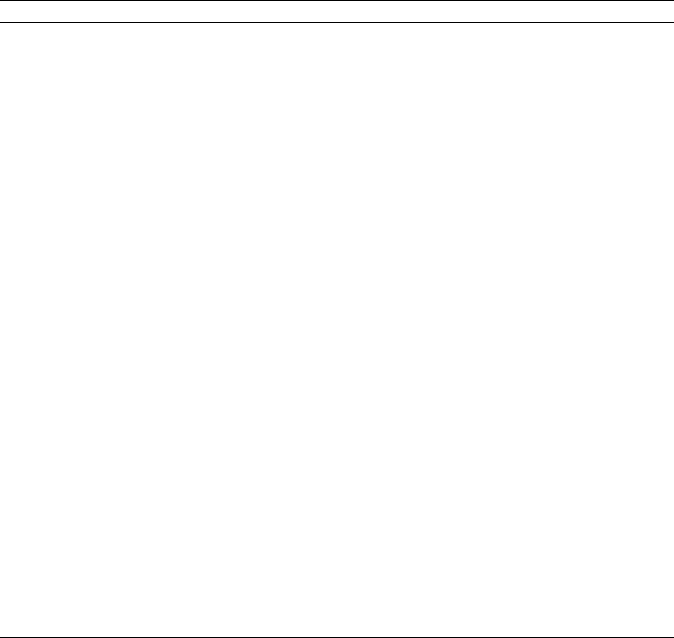
INSURING INTENTIONAL TORTS ARTICLE (FINAL) (DO NOT DELETE) 6/1/2015 9:09 AM
78 HASTINGS BUSINESS LAW JOURNAL Vol. 8:1
subjective standard should be applied. Under this approach, the actual
intent of the policyholder is examined rather than what some fictional
“reasonable person” knew or should have foreseen.
59
Thus, assuming the
exclusion has any applicability to the type of claim at issue, coverage is
only precluded where the insurer can prove the policyholder actually
expected or intended to cause the injury or damage at issue.
60
2. The Injury, Not the Act, Must be Expected or Intended
In most instances, the policyholder intends to engage in the conduct
that gives rise to the injury or damage. Thus, what exactly must the
policyholder expect or intend before the claim is excluded from coverage?
Most jurisdictions follow the rule that the injury or damage must be
expected or intended, not merely the act itself, before coverage is lost for
the claim.
61
With that said, some courts have interpreted this standard to
mean that if some injury or damage is expected or intended, then coverage
is precluded even if the injury or damage at issue is different than what the
policyholder expected or intended.
62
59
. When this standard is applied, the insurer typically needs a specific admission from the
policyholder in order to successfully assert the defense. See Linda J. Kibler, Intentional Injury
Exclusion Clauses: The Question of Ambiguity, 21 VAL. U. L. REV. 361, 371–75 (1987).
60
. See sources cited supra note 51.
61
. See, e.g., Allstate Ins. Co. v. Sparks, 493 A.2d 1110, 1112 (Md. App. 1985) (intentional injury
exclusion applied only where the insured intended both an act causing damage and the results of that
act); Vt. Mut. Ins. Co. v. Singleton, 446 S.E.2d 417, 420–21 (S.C. 1994) (intentional injury exclusion
did not bar coverage where insured had not intended the injury resulting from his voluntary act);
Hanover Ins. Co. v. Talhouni, 604 N.E.2d 689, 690–91 (Mass. 1992); White v. Smith, 440 S.W.2d 497,
508–09 (Mo. App. 1969) (though foreseeable, damages not intentionally inflicted but resulting from an
insured’s negligence may be “caused by accident” and within the coverage afforded by a liability
insurance policy); Cont’l Cas. Co. v. Rapid-Am. Corp., 609 N.E.2d 506, 510 (N.Y. 1993) (“resulting
damage can be unintended even though the act leading to the damage was intentional,” and further
recognizing that “a person may engage in behavior that involves a calculated risk without expecting that
an accident will occur”); Grand River Lime Co. v. Ohio Cas. Ins. Co., 289 N.E.2d 360, 365 (Ohio App.
1972) (recognizing that the term “occurrence” is broader than the term “accident” and may encompass a
fully intended action that resulted in unintended damage).
62
. See LONG, supra note 8, § 1.08(2)(b)(ii); OSTRAGER & NEWMAN, supra note 51, § 8.03(d);
Lopez ex rel. Lopez v. Am. Family Mut. Ins. Co., 148 P.3d 438, 439 (Colo. App. 2006) (intentional act
exclusion applies whenever some injury is intended, even though the injury that actually results differs
in character or degree from the injury actually intended); Farmers Mut. Ins. Co. v. Kment, 658 N.W.2d
662, 668 (Neb. 2003) (in order for the intentionality exclusion in a liability insurance policy to apply,
the insurer must show that the insured acted with the specific intent to cause harm to a third party, but
does not have to show that the insured intended the specific injury that occurred); Butler v. Behaeghe,
548 P.2d 934, 934 (Colo. App. 1976) (holding in assault case that where insured intentionally struck the
plaintiff, he was deemed to have intended the consequences of that action); Ga. Farm Bureau Mut. Ins.
Co. v. Purvis, 444 S.E.2d 109, 109–10 (Ga. Ct. App. 1994) (intentional act exclusion applicable where
the insured acts with the intent that any harm occur, even if actual injury is of a different kind or
magnitude from that intended or expected); State Farm Fire & Cas. Co. v. Johnson, 466 N.W.2d 287,
289 (Mich. Ct. App. 1990) (“Once intended harm is established, the fact of an unintended injury is

INSURING INTENTIONAL TORTS ARTICLE (FINAL) (DO NOT DELETE) 6/1/2015 9:09 AM
Winter 2012 INTENTIONAL TORT INSURANCE 79
Other courts have held, however, that coverage is not precluded if the
policyholder expected an injury or damage that was different or
significantly less severe than what actually occurred.
63
This is the sounder
approach because a policyholder should not be required to forfeit coverage
for a claim if the policyholder did not intend to cause a significant injury or
damage but one occurs nonetheless.
In the context of corporate policyholders, determining who must
expect or intend the injury or damage is a more complex issue.
Corporations act through people. Thus, whose knowledge or expectation
should dictate whether the corporation expected or intended the injury or
harm? In many instances, some employee of the corporation may have
expected or intended the injury or damage but the management or
executives of the corporation had no knowledge of the employee’s actions
and therefore, they did not expect or intend any harm.
For example, in a situation where a low-level employee, unbeknownst
to the corporation’s management, dumps toxic chemicals into a waterway
that results in contamination of the waterway and causes the corporation to
incur millions of dollars in liabilities to remediate the damage, did the
corporation expect or intend to cause the damage? Courts have answered
questions like this one, “no,” because the knowledge or intent of the
corporation’s management should be considered, not the low-level
employee’s.
64
III. PRINCIPLES OF INSURANCE POLICY INTERPRETATION
RELEVANT TO INSURANCE COVERAGE FOR
INTENTIONAL INJURIES OR DAMAGE
When courts are asked to interpret and apply policy language such as
the “expected or intended” exclusion, three well-established rules of policy
interpretation emerge as particularly relevant to the analysis: (1) contra
irrelevant”); see also LONG, supra note 8, § 1.08(2)(b)(ii); James L. Rigelhaupt Jr., Annotation,
Construction and Application of Provision of Liability Insurance Policy, 31 A.L.R. 4th 990–91 (1984).
63
. See, e.g., Yount v. Maisano, 627 So. 2d 148, 151–2 (La. 1993) (“when minor injury is
intended, and a substantially greater or more severe injury results, whether by choice, coincidence,
accident, or whatever, coverage for the more severe injury is not barred”); United Servs. Auto Ass’n v.
Elitzky, 517 A.2d 982, 988 (Pa. Super. Ct. 1986) (“Our interpretation affords maximum coverage to
insured persons as coverage is precluded only for harm of the same general type as that which they set
out to inflict.”); see also Rigelhaupt, supra note 62, at 990–91.
64
. See, e.g., Olin Corp. v. Ins. Co. of N. Am., 762 F. Supp. 548, 564 (S.D.N.Y. 1991), aff’d, 966
F.2d 718 (2d Cir. 1992) (in determining whether the corporation expected or intended the harm, one
should consider only “what [the policyholder’s] executives knew, when they knew it, and what
conclusion they drew from their knowledge.”); Bituminous Cas. Corp. v. Kenway Contracting, Inc.,
240 S.W.3d 633, 638 (Ky. 2007) (coverage analysis involves determining the intentions and
expectations of corporate officers, not lower level employees).
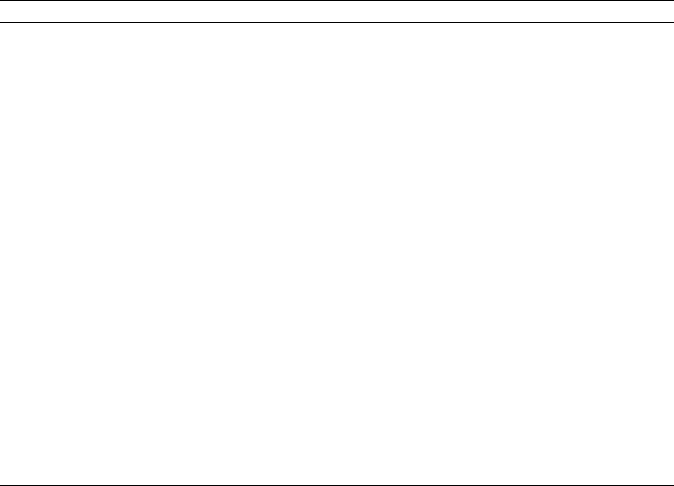
INSURING INTENTIONAL TORTS ARTICLE (FINAL) (DO NOT DELETE) 6/1/2015 9:09 AM
80 HASTINGS BUSINESS LAW JOURNAL Vol. 8:1
proferentem, (2) the doctrine of “reasonable expectations,” and (3)
construction of the policy as a whole.
A. UNDER THE DOCTRINE OF CONTRA PROFERENTEM, AMBIGUITIES
SHOULD BE CONSTRUED AGAINST INSURERS AND IN FAVOR OF
COVERAGE
It is Hornbook insurance law that because insurers are the drafters of
policy language such as the “expected or intended” exclusion, the doctrine
of contra proferentem applies, which means any ambiguities in the policy
language should be construed against the insurers and in favor of
coverage.
65
The test under many states’ laws for determining whether
65
. See, e.g., Appleman and Appleman, supra note 9, §§ 7401, 7481; RUSS & SEGALLA, supra
note 32, § 22:14; LONG, supra note 8, §§ 16.04, 16.06 (1996); JEFFREY W. STEMPEL, INTERPRETATION
OF INSURANCE CONTRACTS, §§ 5.1, 5.2, 11.1 (1994); BUSINESS INSURANCE LAW AND PRACTICE
GUIDE, supra note 50, § 2.02[1]; Ostrager & Newman, supra note 51, § 1.03[b][1]4 David B. Goodwin,
Disputing Insurance Coverage Disputes, 43 STAN. L. REV. 779, 795 (1991); New Castle County, DE v.
Nat’l Union Fire Ins. Co., 243 F.3d 744, 750–56 (3d Cir. 2001) (“When policy language is ambiguous
. . . [the court] must apply the doctrine of contra proferentem. That is, ambiguous language must be
construed against the drafter and in conformance with the reasonable expectations of the insured.”);
Kunin v. Benefit Trust Life Ins. Co., 910 F.2d 534, 538–39 (9th Cir. 1990) (“According to the law of
California and, indeed, every other state as well as the District of Columbia, ambiguities in insurance
contracts must be construed against the insurer”), cert. denied, 498 U.S. 1013 (1990); Keller v. Safeco
Ins. Co. of Am., 877 S.W.2d 90, 92 (Ark. 1994) (“If there is a reasonable construction that may be
given to the contract that would justify recovery, it is the duty of the court to adopt it.”); Crane v. State
Farm Fire and Cas. Co., 5 Cal. 3d. 112, 115 (1971) (“Any ambiguity or uncertainty in an insurance
policy is to be resolved against the insurer.”); Hecla Mining Co. v. N.H. Ins. Co., 811 P.2d 1083, 1091
(Colo. 1991) (finding the term “sudden” to be ambiguous, and construing the phrase “sudden and
accidental” against the insurer to mean unexpected and unintended); Ceci v. National Indem. Co., 622
A.2d 545, 548 (Conn. 1993) (finding “family member” ambiguous and defining it to favor the insured);
Cody v. Remington Elec. Shavers, 427 A.2d 810, 812 (Conn. 1980) (ambiguities in contract documents
are to be resolved against party responsible for its drafting); Phillips Home Builders, Inc. v. Travelers
Ins. Co., 700 A.2d 127, 129–30 (Del. 1997) (“If there is an ambiguity, however, the contract language is
construed most strongly against the insurance company that drafted it.”); Qwest Comm. Int’l v. Nat.
Union Fire Ins. Co. 821 A.2d 323, 328 (Del. Ch. 2002) (“To the extent an ambiguity does exist, the
doctrine of contra proferentum requires that the language be construed most strongly against the
insurance company that drafted it.”); Crawford v. Prudential Ins. Co. of Am., 783 P.2d 900, 904 (Kan.
1989) (“Since an insurer prepares its own contracts, it has a duty to make the meaning clear, and if it
fails to do so, the insurer, and not the insured, must suffer.”); RPM Pizza, Inc. v. Auto. Cas. Ins. Co.,
601 So. 2d 1366, 1369 (La. 1992) (“any ambiguity must be construed against the insurance company
and in favor of the reasonable construction that affords coverage”); Maine Drilling & Blasting, Inc. v.
Ins. Co. of N. Am., 665 A.2d 671, 673 (Me. 1995) (liability insurance policy must be construed to
resolve all ambiguities in favor of coverage); Am. Bumper and Mfg. Co. v. Hartford Fire Ins. Co., 550
N.W.2d 475, 480 (Mich. 1996) (“in construing insurance contracts, any ambiguities are strictly
construed against the insurer to maximize coverage”); DeBerry v. Am. Motorists Ins. Co., 236 S.E.2d
380, 382 (N.C. Ct. App. 1977) (“any ambiguity or uncertainty as to the meaning of terms in a policy
should be resolved against the insurer since it selected the language used”); Kief Farmers Co-op
Elevator Co. v. Farmland Mut. Ins. Co., 534 N.W.2d 28, 32 (N.D. 1995) (in construing policies, “we
balance the equities in favor of providing coverage to the insured”); Weaver v. Royal Ins. Co. of Am.,
674 A.2d 975 (N.H. 1996) (if policy language is ambiguous or where conflicting interpretations exist,
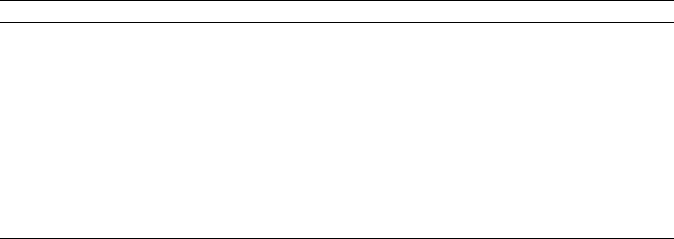
INSURING INTENTIONAL TORTS ARTICLE (FINAL) (DO NOT DELETE) 6/1/2015 9:09 AM
Winter 2012 INTENTIONAL TORT INSURANCE 81
policy language is ambiguous is whether the provisions at issue are
reasonably or fairly susceptible to different interpretations or meanings.
66
the court will construe insurance policy in favor of providing coverage to insured); Allen v. Metro. Life
Ins. Co., 208 A.2d 638, 644 (N.J. 1965) (“policies should be construed liberally in their favor to the end
that coverage is afforded ‘to the full extent that any fair interpretation will allow”); Ohio Cas. Ins. Co.
v. Flanagin, 210 A.2d 221, 226 (N.J. 1965) (“If the controlling language will support two meanings, one
favorable to the insurer, and the other favorable to the insured, the interpretation sustaining coverage
must be applied.”); N.Y. v. Home Indem. Co., 486 N.E.2d 827, 829 (N.Y. 1985) (“If, however, the
language in the insurance contract is ambiguous and susceptible of two reasonable interpretations, the
parties may submit extrinsic evidence as an aid in construction, and the resolution of the ambiguity is
for the trier of fact.”); Gomolka v. State Auto Mut. Ins. Co., 436 N.E.2d 1347, 1348–49 (Ohio 1982)
(“Policies of insurance, which are in language selected by the insurer and which are reasonably open to
different interpretations, will be construed most favorably for the insured.”); Sec. Fin. Co. v. Aetna Ins.
Co., 269 N.E.2d 592, 598 (Ohio 1971) (in construing provisions of insurance policies, a court must
resolve any doubts arising from language used in favor of insured, and if words used in policy bear
more than one reasonable meaning, they should be interpreted liberally in favor of insured); Cohen v.
Erie Indem. Co., 432 A.2d 596, 599 (Pa. Super. Ct. 1981) (“The very existence of two contrary schools
of thought evidenced by the conflicting holdings in cases cited by both the Appellee and the Appellant
is convincing in the conclusion that the clause in issue is ambiguous as to whether coverage is to be
afforded under the fact situation presented. Such ambiguity, by itself, requires that we resolve the issue
in favor of the Appellee, the insured driver.”); Shelley v. Nationwide Mut. Ins. Co., 245 A.2d 674, 675
(Pa. Super. Ct. 1968) (“It is well established that an insurance policy will be construed most strongly
against the insurer who has prepared it.”); Nat’l Union Fire Ins. Co. v. Hudson Energy Co., 811 S.W.2d
552, 555 (Tex. 1991) (if a contract of insurance is susceptible of more than one reasonable
interpretation, we must resolve the uncertainty by adopting the construction that most favors the
insured); Garneau v. Curtis & Bedell, Inc., 610 A.2d 132, 134 (Vt. 1992) (“whether the insurer has a
duty to indemnify, any ambiguity in the insurance contract will be resolved in favor of the insured”);
Peerless Ins. Co. v. Wells, 580 A.2d 485, 487 (Vt. 1990) (noting any ambiguity in policy language
should be resolved in favor of insured); Murray v. W. Pac. Ins. Co., 472 P.2d 611, 615 (Wash. Ct. App.
1970) (noting the well recognized rule that exclusionary clauses in insurance policies are construed
most strongly against the insurer).
66
. See 13 Insurance Law & Practice, at § 7403 (insurer has burden of establishing that insurer’s
interpretation is the only fair interpretation of contract); LONG, supra note 8, § 16.06. See also Vargas
v. Ins. Co. of N. Am., 651 F.2d 838, 840 (2d Cir. 1981) (under New York law, insurer bears heavy
burden of proving policyholder’s interpretation is unreasonable, that the policy is susceptible to the
insurer’s interpretation and the insurer’s interpretation is the only one that could fairly be placed on the
policy); New Castle County, DE, 243 F.3d at 750 (3d Cir. 2001) (the settled test for ambiguity is
whether the provisions in controversy are reasonably or fairly susceptible of different interpretations or
may have two or more different meanings); W. Heritage Ins. Co. v. Magic Years Learning Ctr. and
Child Care, Inc., 45 F.3d 85, 88 (5th Cir. 1995) (applying Texas law, noting court must enforce policy
as written if it can be given only one reasonable construction); Desai v. Farmers Ins. Exch., 55 Cal.
Rptr. 2d 276, 279 (Cal. Ct. App. 1996) (policy language is ambiguous if it is susceptible to two or more
meanings); Shepard v. Calfarm Life Ins. Co., 7 Cal. Rptr. 2d 428, 432–33 (Cal. Ct. App. 1992) (a policy
provision is ambiguous when it is capable of two or more constructions, both of which are reasonable,
and the burden of proving one reasonable construction falls to the insurer); Phillips Home Builders,
Inc., 700 A.2d at 129 (“Convoluted or confusing terms are the problem of the insurer . . . not the
insured.”); High Country Ass’n. V. N.H. Ins. Co., 648 A.2d 474, 476 (N.H. 1994) (“If the language of
the policy reasonably may be interpreted more than one way and one interpretation favors coverage, an
ambiguity exists in the policy that will be construed in favor of the insured and against the insurer.”);
Salem Group v. Oliver, 607 A.2d 138, 139 (N.J. 1992) (when a policy fairly supports an interpretation
favorable to both the insured and the insurer, the policy should be interpreted in favor of the insured);
Harris, Jolliff & Michel, Inc. v. Motorists Mut. Ins. Co., 255 N.E.2d 302, 307 (Ohio Ct. App. 1970)
(where insurer and insured each presented reasonable interpretations of exclusion, exclusion is
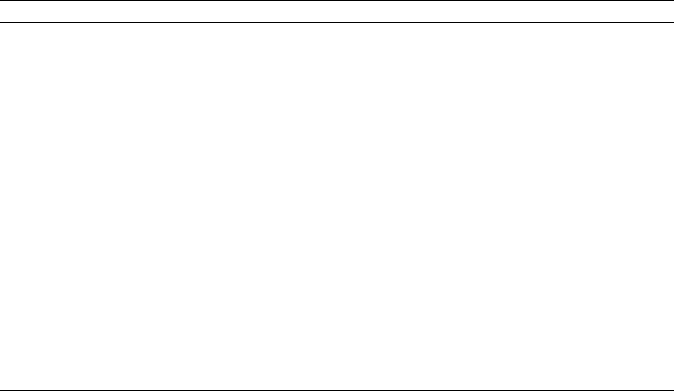
INSURING INTENTIONAL TORTS ARTICLE (FINAL) (DO NOT DELETE) 6/1/2015 9:09 AM
82 HASTINGS BUSINESS LAW JOURNAL Vol. 8:1
Where the controversy involves a phrase that insurance companies have
failed to define and has generated many lawsuits with varying results,
common sense dictates that the policy language must be ambiguous.
67
Further, because exclusions purport to limit coverage that otherwise is
provided, they are to be narrowly construed and the insurer has the burden
of proving they are applicable.
68
Indeed, numerous courts have held that
exclusions will not be interpreted and applied in such a way as to swallow
the basic coverages provided under a policy.
69
ambiguous and must be interpreted in favor of the insured); Goldstein v. Occidental Life Ins. Co., 273
A.2d 318, 321 (R.I. 1971) (“Test to be applied by a court in determining the meaning of ambiguous
terms in an insurance contract is not what the insurer intended by its words, but what the ordinary
reader and purchaser applying for insurance would have understood them to mean.”); Harris, Jolliff &
Michel, Inc. v. Motorists Mut. Ins. Co., 593 A.2d 45, 47 (R.I. 1991) (noting ambiguity if clause has
more than one reasonable meaning); H.D. Bonner v. United Servs. Auto Ass’n, 841 S.W.3d 504, 506
(Tex. Ct. App. 1992) (“court must adopt the construction of an exclusionary clause urged by the insured
as long as the construction is not unreasonable, even if the construction urged by the insurer appears to
be more reasonable, or a more accurate reflection of the parties’ intent”).
67
. See, e.g., New Castle County, DE, 243 F.3d at 756 (finding ambiguity where the contested
phrase was not defined and had been interpreted differently by various courts); Sec. Ins. Co. v.
Investors Diversified Ltd., Inc., 407 So. 2d 314, 316 (Fla. Dist. Ct. App. 1981) (“The insurance
company contends that the language is not ambiguous, but we cannot agree and offer as proof of that
pudding the fact that the Supreme Court of California and the Fifth Circuit in New Orleans have arrived
at opposite conclusions from a study of essentially the same language.”); Crawford v. Prudential Ins.
Co., 783 P.2d 900, 908 (Kan. 1989) (“[r]eported cases are in conflict, the trial judge and the Court of
Appeals reached different conclusions and the justices of this court [disagree]. Under such
circumstances, the clause is, by definition, ambiguous and must be interpreted in favor of the insured.”);
Allstate Ins. Co. v. Hartford Accident & Indem. Co., 311 S.W.2d 41, 46 (Mo. Ct. App. 1958) (“Since
we assume that all courts adopt a reasonable construction, the conflict is of itself indicative that the
word as so used is susceptible of at least two reasonable interpretations, one of which extends the
coverage to the situation at hand”); George H. Olmsted & Co. v. Metro. Life Ins. Co., 161 N.E. 276,
277 (Ohio 1928) (“Where the language of a clause used in an insurance contract is such that courts of
numerous jurisdictions have found it necessary to construe it and in such construction have arrived at
conflicting conclusions as to the correct meaning, intent and effect thereof, the question whether such
clause is ambiguous ceases to be an open one.”); Cohen, 432 A.2d at 599 (“The mere fact that [courts
differ on the construction of the provision] itself creates the inescapable conclusion that the provision in
issue is susceptible to more than one interpretation.”). See also Charles C. Marvel, Annotation,
Division of Opinion Among Judges on Same Court or Among Other Courts or Jurisdictions
Considering Same Question, as Evidence that Particular Clause of Insurance Policy is Ambiguous, 4
A.L.R. 4th 1253 (1981); LONG, supra note 8, § 16.06; BUSINESS INSURANCE LAW AND PRACTICE
GUIDE, supra note 50, § 2.02[1]; STEMPEL, supra note 65, § 5.8.
68
. See, e.g., SCSC Corp. v. Allied Mut. Ins. Co., 536 N.W.2d 305, 313 (Minn. 1995) (insurer has
burden to prove the applicability of an exclusion as an affirmative defense); Continental Ins. Co. v.
Louis Marx & Co., 415 N.E.2d 315, 317 (Ohio 1980) (defense has burden of proving defense based
upon exclusion); Brown v. Snohomish Physicians Corp., 845 P.2d 334, 340 (Wash. 1993) (once insured
has made a prima facie case that there is coverage, burden shifts to the insurer to prove an exclusionary
provision applies). See also Appleman and Appleman, supra note 9, § 7405; RUSS & SEGALLA, supra
note 32, § 22:31 (1995); BUSINESS INSURANCE LAW AND PRACTICE GUIDE, supra note 50, § 2.02[1].
69
. See, e.g., Tews Funeral Home v. Ohio Cas. Ins. Co., 832 F.2d 1037, 1045 (7th Cir. 1987)
(policy excluding acts explicitly covered in prior section of policy construed against insurer); Alstrin v.
St. Paul Mercury Ins. Co., 179 F. Supp.2d 376, 390 (D. Del. 2002) (ambiguities construed against
insurer in order to reduce the insurer’s incentive to draft policy language where certain provisions

INSURING INTENTIONAL TORTS ARTICLE (FINAL) (DO NOT DELETE) 6/1/2015 9:09 AM
Winter 2012 INTENTIONAL TORT INSURANCE 83
1. Contra Proferentum Applied to the “Expected or Intended” Exclusion
As discussed above, an ambiguous insurance policy provision is one
that has more than one reasonable meaning. When one attempts to
interpret and apply the “expected or intended” exclusion, as evidenced by
the courts’ struggles with what the test even should be, it becomes apparent
that the language is ambiguous when applied in many instances.
70
B. THE “REASONABLE EXPECTATIONS” DOCTRINE
Another staple of insurance policy interpretation law is that a policy
should be interpreted in such a way as to fulfill the “reasonable
expectations” of the policyholder.
71
A seminal article regarding the
“reasonable expectations” doctrine was written by then Professor Robert
Keeton more than forty years ago.
72
In his subsequent treatise, Judge
Keeton summarized the doctrine as follows: “In general, courts will protect
the reasonable expectations of applicants, insureds, and intended
beneficiaries regarding the coverage afforded by insurance contracts even
purport to give coverage while other clauses take that very coverage away); Titan Indem. Co. v.
Newton, 39 F. Supp. 2d 1336, 1348 (M.D. Ala. 1999) (finding coverage even though “the limitations of
[the] policy completely swallow up the insuring provisions”); Bailer v. Erie Ins. Exch., 687 A.2d 1375,
1380 (Md. 1997) (If the exclusion totally swallows the insuring provision, then such provisions create
the greatest form of ambiguity, and insurer is obliged to defend and indemnify.).
70
. See sources cited supra note 51.
71
. OSTRAGER & NEWMAN, supra note 51, §1.03[b] (identifying courts in forty-two states that
have expressed support for, or applied a form of, the reasonable expectations doctrine); RUSS &
SEGALIA, supra note 32, § 22,11; LONG, supra note 8, § 16.07; BUSINESS INSURANCE LAW AND
PRACTICE GUIDE, supra note 50, § 2.02[1]; ROBERT E. KEETON AND ALAN I. WIDISS, INSURANCE LAW,
§ 6.3 (1988); STEMPEL, supra note 65, at § 11.1. See also AIU Ins. Co. v. Super. Ct., 799 P.2d 1253,
1264 (Cal. 1990) (ambiguous coverage clauses of insurance policies are to be interpreted broadly to
protect the objectively reasonable expectations of the insured); Roland v. Ga. Farm Bureau Mut. Ins.
Co., 462 S.E.2d 623, 625 (Ga. 1995) (“[a] contract of insurance should be strictly construed against the
insurer and read in favor of coverage in accordance with the reasonable expectations of the insured”);
Corgatelli v. Global Life & Accident Ins. Co., 533 P.2d 737, 740 (Idaho 1975) (applying reasonable
expectations doctrine to “total pollution exclusion,” notwithstanding conclusion that the provision was
unambiguous); A.B.C. Builders, Inc. v. Am. Mut. Ins. Co., 661 A.2d 1187, 1190 (N.H. 1995) (“the
policy language must be so clear as to create no ambiguity which might affect the insured’s reasonable
expectations”); Fed. Ins. Co. v. Century Fed. Sav. & Loan Ass’n, 824 P.2d 302, 308 (N.M. 1992) (court
will give effect to policyholder’s reasonable expectations in construing policy language); Mills v.
Agrichemical Aviation, Inc., 250 N.W.2d 663, 671–73 (N.D. 1977) (doctrine of reasonable expectations
is properly invoked to discern intentions of parties and impose liability on insurer); Nat’l Mut. Ins. Co.
v. McMahon & Sons, Inc., 356 S.E.2d 488, 495–96 (W. Va. 1987) (court will apply reasonable
expectations doctrine to construe the policy in a manner that a reasonable person standing in the shoes
of the insured would expect the language to mean, even though painstaking examination of the policy
provisions would have negated those expectations).
72
. Robert Keeton, Insurance Law Rights at Variance With Policy Provisions, 83 HARV. L. REV.
961, 967 (1970).
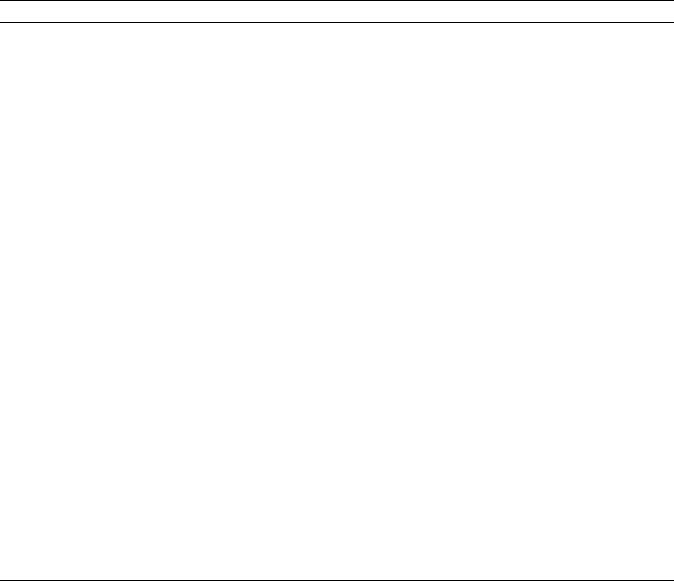
INSURING INTENTIONAL TORTS ARTICLE (FINAL) (DO NOT DELETE) 6/1/2015 9:09 AM
84 HASTINGS BUSINESS LAW JOURNAL Vol. 8:1
though a careful examination of the policy provisions indicates that such
expectations are contrary to the expressed intention of the insurer.”
73
As Professor Mootz more recently commented, “In other words, even
when the policy language unambiguously precludes coverage, under certain
circumstances, courts will hold that coverage exists.”
74
Stated differently, the policyholder should receive in coverage what it
objectively, can reasonably expect to receive even if the policy language
does not expressly support coverage. Thus, for example, a policyholder
that is in the business of selling products (e.g., widgets) reasonably can
expect that it will receive coverage for products liability claims related to
widgets when it buys commercial general liability insurance for purposes
of insuring itself against product liability claims. So, in oversimplified
terms, if an insurer sells insurance that covers products liability claims for
which it accepted a premium, then courts generally should interpret the
policy in such a way that coverage for product liability claims related to
widgets will be provided regardless of what interpretation of the policy the
73
. KEETON & WIDISS, supra note 71, 6.3(a)3. For commentary regarding the reasonable
expectations doctrine, see Robert H. Jerry II, Insurance, Contract, and the Doctrine of Reasonable
Expectations, 5 CONN. INS. L.J. 21 (1998) (discussing the doctrine as conceptualized by Keeton); Roger
C. Henderson, The Doctrine of Reasonable Expectations in Insurance Law After Two Decades, 51 OHIO
ST. L.J. 823 (1990) (providing a detailed historical account of the doctrine and asserting that the
doctrine is principled and can be applied within justiciable guidelines); William A. Mayhew,
Reasonable Expectations: Seeking a Principled Application, 13 PEPP. L. REV. 267, 287–96 (1986)
(formulating standards for applying the doctrine); Mark C. Rahdert, Reasonable Expectations
Reconsidered, 18 CONN. L. REV. 323, 392 (1986) (arguing for refinements to the doctrine in response to
the fading appeal that the doctrine holds for courts and commentators and contending that courts should
“discard their unfortunate tendency to speak the platitudes of reasonable expectations without
undertaking a careful and systematic analysis”); Kenneth S. Abraham, Judge-Made Law and Judge-
Made Insurance: Honoring the Reasonable Expectations of the Insured, 67 VA. L. REV. 1151 (1981).
While there is relatively broad acceptance of the doctrine, judicial interpretation and application of the
doctrine is variable. See Peter N. Swisher, A Realistic Consensus Approach to the Insurance Law
Doctrine of Reasonable Expectations, 35 TORT & INS. L.J. 729 (2000) (exploring judicial responses and
proposing a middle ground approach); Jeffrey W. Stempel, Unmet Expectations: Undue Restriction of
the Reasonable Expectations Approach and the Misleading Mythology of Judicial Role, 5 CONN. INS.
L.J. 181, 182–83, 191 (1998) (describing judicial approaches and noting both liberal and narrow
approaches among the numerous states that have adopted the doctrine); Laurie K. Fett, Note, The
Reasonable Expectations Doctrine: An Alternative to Bending and Stretching Traditionally Tools of
Contract Interpretation, 18 WM. MITCHELL L. REV. 1113 (1992) (student note exploring the doctrine
under Minnesota law); Stephen J. Ware, Note, A Critique of the Reasonable Expectations Doctrine, 56
U. CHI. L. REV. 1461 (1989) (student note providing a “law and economics” critique of the doctrine);
Scott B. Krider, Note, The Reconstruction of Insurance Contracts Under the Doctrine of Reasonable
Expectations, 18 J. MARSHALL L. REV. 155 (1984) (student note arguing that regulatory efforts address
the underlying problems in the insurance industry in a manner superior to judicial use of reasonable
expectations); William M. Lashner, Note, A Common Law Alternative to the Doctrine of Reasonable
Expectations in the Construction of Insurance Contracts, 57 N.Y.U. L. REV. 1175, 1208 (1982) (student
note arguing that “any provision which undercuts the bargained-for insurance coverage must . . . [be]
specifically explained to the insured” to be enforceable).
74
. Francis J. Mootz III, Insurance Coverage of Employment Discrimination Claims, 52 U. MIAMI
L. REV. 1, 22 (1997).

INSURING INTENTIONAL TORTS ARTICLE (FINAL) (DO NOT DELETE) 6/1/2015 9:09 AM
Winter 2012 INTENTIONAL TORT INSURANCE 85
insurer provides when a claim is presented (or exclusions in the policy that
purportedly apply).
So what does this mean in the context of the “expected or intended”
exclusion? As discussed below in Section III, a policyholder reasonably
can expect to receive coverage for many intentional torts despite the
presence of the “expected or intended” exclusion in the policy because the
exclusion is inconsistent with the coverage grant in liability policies under
which numerous types of intentional torts are expressly covered. Stated
differently, insurers should not be permitted to agree in the insuring
agreement portion of the policy to cover intentional torts such as trademark
infringement, disparagement, malicious prosecution, invasion of privacy,
and employment discrimination, but then, when claims are tendered, point
to the “expected or intended” exclusion and argue that such claims are not
covered because the policyholder expected or intended the injuries. To do
so would render the coverage provided under the policy illusory, which is
impermissible.
75
C. CONSTRUCTION OF THE POLICY AS A WHOLE
The third policy interpretation principle applicable to the “expected or
intended” exclusion is similar to the “reasonable expectations” doctrine in
that, if possible, the policy should be interpreted in a way that reconciles
the various provisions of the policy and attempts to give effect to all of the
policy’s provisions.
76
In essence, this principle means courts should give
75
. See sources cited supra note 69. See also Bowersox Truck Sales & Serv., Inc. v. Harco Nat’l
Ins. Co., 209 F.3d 273, 277–78 (3d Cir. 2000) (rejecting insurer’s interpretation of policy’s two-year
limitation period where interpretation would have rendered coverage illusory); Harris v. Gulf Ins. Co.,
297 F. Supp. 2d 1220, 1226 (N.D. Cal. 2003) (rejecting insurer’s interpretation of insured v. insured
exclusion in policy because it “would render the coverage provided by the policy illusory”); Alstrin v.
St. Paul Mercury Ins. Co., 179 F. Supp.2d 376, 398 (D. Del. 2002) (rejecting a D&O insurer’s
interpretation of the policy’s deliberate fraud exclusion where, if applied, “there would be little or
nothing left to that coverage” because “[n]o insured would expect such limited coverage from a policy
that purports to cover all types of securities fraud claims.”); Atofina Petrochemicals, Inc. v. Cont’l Cas.
Co., 185 S.W.3d 440, 444–45 (Tex. 2005) (rejecting insurer’s interpretation of additional insured
endorsement because it “would render coverage under the endorsement largely illusory”).
76
. See, e.g., GA. CODE ANN. § 13-2-2(4) (2010) (contracts should be interpreted as a whole);
Rothenberg v. Lincoln Farm Camp, Inc., 755 F.2d 1017, 1019 (2d Cir. 1985) (applying New York Law,
finding “an interpretation that gives a reasonable and effective meaning to all the terms of a contract is
generally preferred to one that leaves a part unreasonable or of no effect”); Fireman’s Fund Ins. Co. v.
Allstate Ins. Co., 286 Cal. Rptr. 146, 155–156 (Cal. 1991) (“In short, an insurance contract is to be
construed in a manner which gives meaning to all its provisions in a natural, reasonable, and practical
manner, having reference to the risk and subject matter and to the purposes of the entire contract.”);
Barrett v. Farmers Ins. Group, 174 Cal. App. 3d 747, 750–51 (Cal. 1985) (construing insurance contract
to give meaning to all its provisions); State Farm Mut. Auto. Ins. Co. v. Crane, 217 Cal.App.3d 1127,
1132 (Cal. 1990) (determining that contract is to be construed in a manner which gives meaning to all
its provisions in a natural, reasonable, and practical manner); Weiss v. Bituminous Cas. Corp., 319
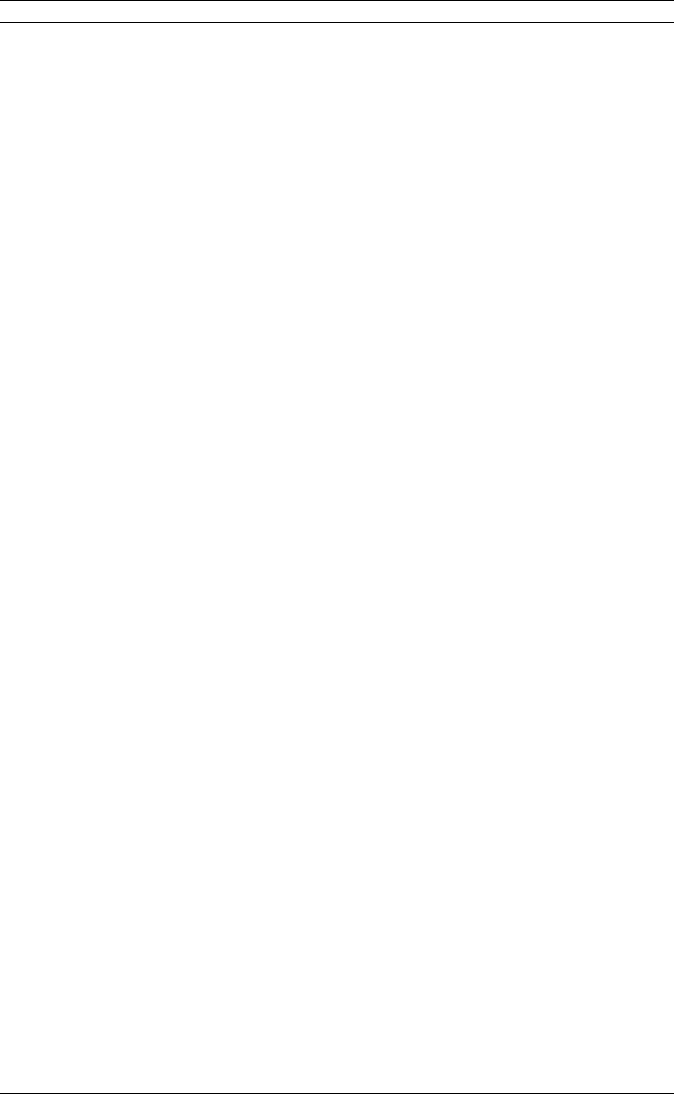
INSURING INTENTIONAL TORTS ARTICLE (FINAL) (DO NOT DELETE) 6/1/2015 9:09 AM
86 HASTINGS BUSINESS LAW JOURNAL Vol. 8:1
effect to all of the policies’ provisions if possible, and, do so in a way that
is consistent with the general purpose of the policy as a whole. In the
context of intentional injuries or damage, this doctrine’s application is
similar to the “reasonable expectations” doctrine, which means that the
“expected or intended” exclusion should not be read by itself in isolation
and then applied to a claim in determining whether the claim is covered.
To the contrary, courts should first look to the insuring language in the
policy to determine whether the policy is intended to cover the type of
claim at issue. Then, if the claim is covered under the insuring language, as
is the case with many intentional torts, then the “expected or intended”
exclusion simply should not apply.
Stated differently, and as is discussed below in Section III, many types
of insurance policies such as commercial general liability, employment
practices liability, and homeowners policies expressly provide coverage for
intentional torts in the insuring agreement sections of the policies. Thus,
when analyzing whether there is coverage for a claim, courts should not
analyze just a portion of the policy such as the “expected or intended”
exclusion. Instead, the insurance policy should be read as a whole—
keeping in mind that the basic purpose of insurance is to protect the
policyholder from losses or liabilities in exchange for the payment of a
premium. To do otherwise would make the insurance illusory.
77
IV. INSURANCE COVERAGE FOR INTENTIONAL TORTS
The death knell for the myth that insurance does not cover intentional
injuries or damage is the fact that many types of intentional torts are
expressly covered under liability policies. Indeed, under the Personal and
Advertising Injury Liability Section of standard form liability policies
drafted by the Insurance Services Organization (“ISO”), which are used by
most insurers, coverage for many intentional torts is expressly provided.
A. PERSONAL AND ADVERTISING INJURY COVERAGE
The Personal and Advertising Injury Liability Section of the 2006 ISO
Commercial General Liability Coverage Form provides as follows:
N.E.2d 491, 497 (Ill. 1974) (provisions in an insurance policy should be interpreted in context of entire
policy); Welborn v. Ill. Nat’l Cas. Co., 106 N.E.2d 142, 143 (Ill. App. 1952) (in construction of an
insurance policy, the court should determine intention of the parties from the whole agreement, and
endeavor to give a meaning to all provisions, if possible, which will render them consistent and
operative).
77
. See sources cited supra notes 69 and 75.

INSURING INTENTIONAL TORTS ARTICLE (FINAL) (DO NOT DELETE) 6/1/2015 9:09 AM
Winter 2012 INTENTIONAL TORT INSURANCE 87
COVERAGE B PERSONAL AND ADVERTISING INJURY
LIABILITY
1. Insurance Agreement
a. We will pay those sums that the insured becomes legally obligated
to pay as damages because of “personal and advertising injury” to
which this insurance applies. We will have the right and duty to defend
the insured against any “suit” seeking those damages. However, we
will have no duty to defend the insured against any “suit” seeking
damages for “personal and advertising injury” to which this insurance
does not apply. We may, at our discretion, investigate any offense and
settle any claim or “suit” that may result . . . .
78
“Personal and advertising injury” is defined in the 2006 ISO
Commercial General Liability Coverage Form as follows:
14. “Personal and advertising injury” means injury, including
consequential “bodily injury”, arising out of one or more of the
following offenses:
a. False arrest, detention or imprisonment;
b. Malicious prosecution;
c. The wrongful eviction from, wrongful entry into, or invasion of the
right of private occupancy of a room, dwelling or premises that a
person occupies, committed by or on behalf of its owner, landlord or
lessor;
d. Oral or written publication, in any manner, of material that slanders
or libels a person of organization or disparages a person’s or
organization’s goods, products or services;
e. Oral or written publication, in any manner, of material that violates a
person’s right of privacy;
f. The use of another’s advertising idea in your “advertisement”; or
g. Infringing upon another’s copyright, trade dress or slogan in your
“advertisement.”
79
Most, if not all, of these types of torts are committed intentionally by
the policyholder. Indeed, how would one unintentionally prosecute
someone maliciously? The “malicious” qualification in the phrase
“malicious prosecution” by definition requires intent. Similarly, how
would someone wrongfully evict someone unintentionally? Eviction has
an intentional element to it. Is it possible to unintentionally disparage a
person?
Yet, coverage for all of these torts and many more is expressly
provided under the standard form language in commercial liability policies
quoted above.
78
. ISO PROPERTIES, INC., FORM NO. CG 00 01 12 07, COMMERCIAL GENERAL LIABILITY
COVERAGE FORM (2006).
79
. COMMERCIAL GENERAL LIABILITY COVERAGE FORM, supra note 78.
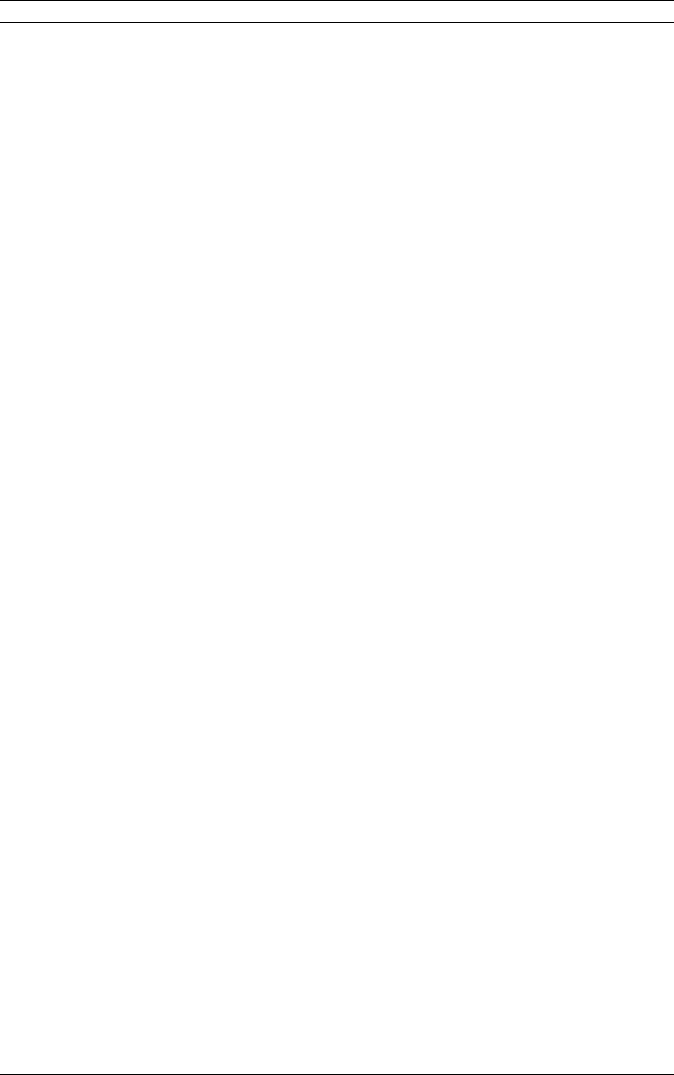
INSURING INTENTIONAL TORTS ARTICLE (FINAL) (DO NOT DELETE) 6/1/2015 9:09 AM
88 HASTINGS BUSINESS LAW JOURNAL Vol. 8:1
1. Trademark/Trade Dress Infringement
In light of the standard form policy language quoted above, it should
come as no surprise that numerous courts have held insurance coverage is
available under commercial general liability policies for trademark/trade
dress infringement.
80
Although a policyholder can negligently infringe a
trademark or trade dress of another, in most situations the infringement is
intentional because the policyholder is hoping to capitalize on the
popularity of the trademark at issue.
2. Defamation, Libel and Disparagement
Courts also have held that insurance coverage is available for
defamation,
81
libel,
82
and disparagement.
83
All of these types of claims
have an intentional injury element to them.
3. Malicious Prosecution
Similarly, courts have held that malicious prosecution is covered.
84
The name itself—malicious prosecution—tells you that the conduct is
intentional. It is covered nonetheless.
4. Wrongful Imprisonment and Wrongful Eviction
Wrongful eviction also has been held to be covered under commercial
general liability policies.
85
It is hard to imagine someone imprisoning
someone unintentionally, is it not?
5. Invasion of Privacy
Finally, commercial general liability policies also cover claims for
invasion of privacy, which should have ever increasing importance in
today’s world of the Internet, Facebook, Twitter, and the paparazzi.
86
80
. See sources cited supra notes 17–18.
81
. See sources cited supra note 15.
82
. See sources cited supra note 15.
83
. See sources cited supra note 16.
84
. See sources cited supra notes 21 and 25.
85
. See sources cited supra note 24.
86
. See sources cited supra note 26.
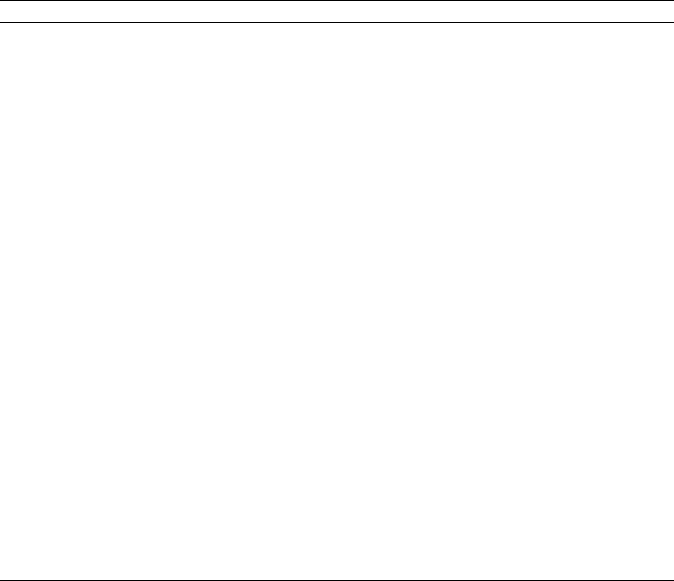
INSURING INTENTIONAL TORTS ARTICLE (FINAL) (DO NOT DELETE) 6/1/2015 9:09 AM
Winter 2012 INTENTIONAL TORT INSURANCE 89
B. IMPROPER EMPLOYMENT PRACTICES
Insurance is also available for improper employment practices. In
addition to being able to recover under commercial general liability and
directors’ and officers’ liability policies for certain types of improper
employment practices claims, since the early 1990s employment practices
liability insurance has been available.
87
Employment practices liability
insurance provides coverage for many intentional employment practices
that result in lawsuits against the policyholder such as racial discrimination,
wrongful termination, sexual discrimination and retaliatory discharge.
88
C. VICARIOUS LIABILITY
Courts also have found coverage for a variety of claims in which the
policyholder is responsible for intentional injuries or damage caused by
someone else.
89
87
. For various commentators’ thoughts regarding issues related to insurance coverage for
wrongful employment practices and a discussion of the case law in that area, see Richard A. Bales &
Julie McGhahy, Insuring Title VII Violations, 27 S. ILL. U.L.J. 71 (2002); Whitney L. Elzen, Workplace
Violence: Vicarious Liability and Negligence Theories as a Two-Fisted Approach to Employer
Liability. Is Louisiana Clinging to an Outmoded Theory?, 62 LA. L. REV. 897 (2002); Jeffrey W.
Stempel, Judge-Made Insurance That Was Not on the Menu: Schmidt v. Smith and the Confluence of
Text, Expectation, and Public Policy in the Realm of Employment Practices Liability, 21 W. NEW. ENG.
L. REV. 283 (1999); Francis J. Mootz III, Insurance Coverage of Employment Discrimination Claims,
52 U. MIAMI L. REV. 1 (1997); Douglas R. Richmonds, Insurance Coverage for Wrongful Employment
Practices, 48 OKLA. REV. 1 (1995).
88
. Richmonds, supra note 87, at 2–7.
89
. See KEETON & WIDISS, supra note 71, at 528 (“In most circumstances, courts hold both (1)
that the express provisions commonly used in liability insurance policies do not preclude coverage for
damages awarded for an intentional tort when the insured is held to be responsible on a theory of
vicarious liability, and (2) that it would not be appropriate to imply a limitation that would restrict the
coverage.”). See also Dart Indus., Inc. v. Liberty Mut. Ins. Co., 484 F.2d 1295, 1297 (9th Cir. 1973)
(considering California’s statutory bar against insuring willful wrongdoing and determining that
California case law “clearly indicates the policy of the statutory exclusion as being limited to a situation
where the insured is personally at fault”); Chi. Bd. of Options Exch., Inc. v. Harbor Ins. Co., 738 F.
Supp. 1184, 1187 (N.D. Ill. 1990) (“[The Exchange] did not insure itself . . . against its own intentional
torts. Rather . . . [it] insured itself against the intentional torts of its officers and directors.”); Scott v.
Instant Parking, Inc., 245 N.E.2d 124, 126 (Ill. App. 1969) (“This case . . . involves only the right of a
corporation to insure against liability caused by its agents and servants. There is no reasonable basis to
declare the latter type insurance is against public policy.”); Leon Lowe & Sons, Inc. v. Great Am.
Surplus Lines Ins. Co., 572 So. 2d 206, 210 (La. Ct. App. 1990) (“Public policy forbids a person from
insuring against his own intentional acts, but does not forbid him from insuring against the intentional
acts of another for which he may be vicariously liable.”); Perl v. St. Paul Fire & Marine Ins. Co., 345
N.W.2d 209, 216 (Minn. 1984) (permitting recovery under a professional liability policy by an
attorney’s law firm for the attorney’s breach of fiduciary duty to a client); Floralbell Amusement Corp.
v. Standard Sur. & Cas. Co., 9 N.Y.S. 2d 959, 963 (N.Y. City Ct. 1937) (noting that it is “far fetched” to
assume that coverage of one employer’s liability incurred as the result of an unauthorized assault
committed by one of its employees would be an inducement to the insured employer to encourage its
employees to commit assaults because it can with equal force be said that liability insurance encourages
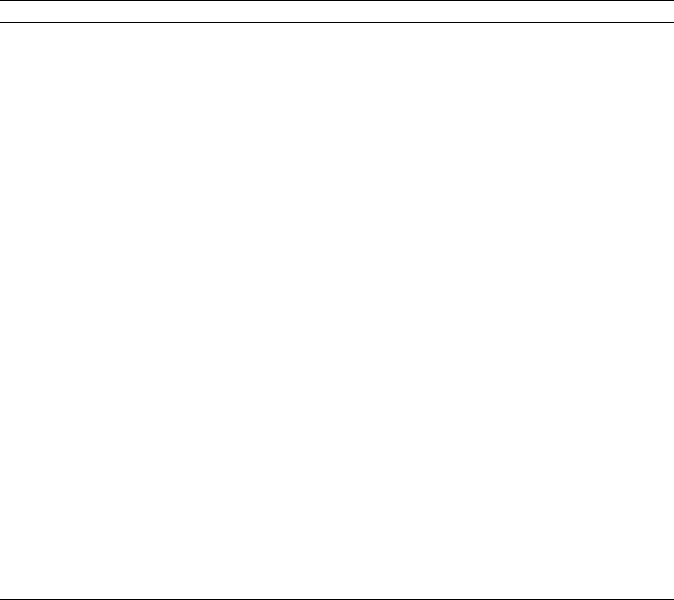
INSURING INTENTIONAL TORTS ARTICLE (FINAL) (DO NOT DELETE) 6/1/2015 9:09 AM
90 HASTINGS BUSINESS LAW JOURNAL Vol. 8:1
1. Imputed Liability – An Employer’s or Parent’s Liability for Its
Employees’ or Children’s Conduct
One of the most common situations in which courts have found
coverage for vicarious liabilities is where an employer is held liable for the
intentional injuries or damage(s) caused by one of its employees under the
theory of respondeat superior.
90
In such situations, it is the employee’s, not
the employer’s, intentional conduct that result in the injury or damage.
Courts have reached similar results in cases involving parents’
vicarious liability for their children’s conduct.
91
Thus, neither the
“expected or intended” exclusion nor public policy concerns acted as a bar
to coverage.
92
negligence); Dayton Hudson Corp. v. Am. Mut. Liab. Ins. Co., 621 P.2d 1155, 1160 (Okla. 1980)
(holding vicarious liability to be insurable “unless the employer’s volition was either directly or
indirectly an element in the commission of the harm”); McLeod v. Tecorp. Intl., Ltd., 844 P.2d 925, 927
n.3 (Or. Ct. App. 1992) (noting that the fact that an employee was acting within the scope of his
employment is of little concern in determining whether an employer’s imputed liability should be
insurable because it “is the insured’s actual conduct, not the imputed conduct of another” that matters),
modified, 850 P.2d 1161 (Or. Ct. App.), rev’d., 865 P.2d 1283 (Or. 1993).
90
. See, e.g., Dart Indus., Inc., 484 F.2d at 1297 (considering California’s statutory bar against
insuring willful wrongdoing and determining that California case law “clearly indicates the policy of
the statutory exclusion as being limited to a situation where the insured is personally at fault”); Instant
Parking, Inc., 245 N.E.2d at 126 (“This case . . . involves only the right of a corporation to insure
against liability caused by its agents and servants. There is no reasonable basis to declare the latter type
insurance is against public policy.”); Leon Lowe & Sons, Inc., 572 So. 2d at 210 (“Public policy forbids
a person from insuring against his own intentional acts, but does not forbid him from insuring against
the intentional acts of another for which he may be vicariously liable.”); Perl, 345 N.W.2d at 216
(permitting recovery by attorney’s law firm under a professional liability policy for the attorney’s
breach of his fiduciary duty to a client); Floralbell Amusement Corp., 9 N.Y.S. 2d at 963 (noting that it
is “far fetched” to assume that coverage of one employer’s liability incurred as the result of an
unauthorized assault committed by one of its employees would be an inducement to the insured
employer to encourage its employees to commit assaults because it can with equal force be said that
liability insurance encourages negligence).
91
. See, e.g., Arenson v. Nat’l Auto. & Cas. Ins. Co., 286 P.2d 816, 818 (Cal. 1955) (enforcing
coverage under a homeowner’s policy for liability parents incurred as a result of the intentional
wrongdoing of their son). For a discussion regarding the availability of homeowners insurance to cover
intentional injuries caused by children, see Cynthia A. Muse, Note, Homeowners Insurance: A Way to
Pay for Children’s Intentional and Violent Acts?, 33 IND. L. REV. 665, 666 (2000); Hazel Glenn Beh,
Tort Liability for Intentional Acts of Family Members: Will Your Insurer Stand by You?, 68 TENN. L.
REV. 1, 2 (2000).
92
. See, e.g., Chi. Bd. of Options Exch., Inc. v. Harbor Ins. Co., 738 F. Supp. 1184, 1187 (N.D. Ill.
1990) (“The Exchange did not insure itself . . . against its own intentional torts. Rather . . . it insured
itself against the intentional torts of its officers and directors.”); Dayton Hudson Corp., 621 P.2d at
1160.
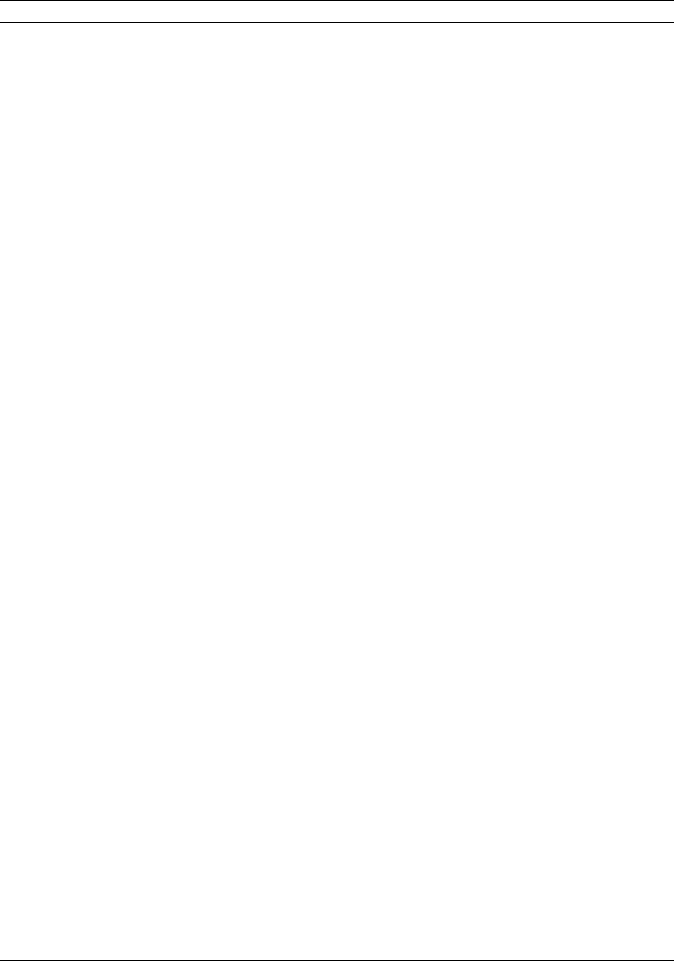
INSURING INTENTIONAL TORTS ARTICLE (FINAL) (DO NOT DELETE) 6/1/2015 9:09 AM
Winter 2012 INTENTIONAL TORT INSURANCE 91
2. Negligent Supervision
Another situation in which courts have rejected arguments that
coverage is precluded for intentional injuries or damage is where an
employer’s or a parent’s liability for its employee’s or child’s intentional
conduct is based upon the theory that the employer or parent negligently
supervised the employee
93
or the child.
94
Again, the employer’s or parent’s
liability was not premised upon its own intentional conduct; thus, the
“expected or intended” exclusion was not applicable and no public policy
issues were implicated.
3. Innocent Co-Insureds
Some courts have also recognized an exception to the “rule” that first-
party insurance policies do not cover the deliberate destruction of property.
As one commentator noted, “in recent years, a number of courts have
moved away from the rule barring recovery for intentionally incurred
losses to property to a rule that permits recovery by an innocent co-insured
of a loss intentionally caused by . . . another co-insured.”
95
This innocent
co-insured exception often arises in the context of joint ownership of
property, particularly marital property.
96
Thus, for example, a husband can
recover under a homeowner’s policy for the deliberate destruction of his
house by his estranged wife.
97
The rationale for the exception, at least in
part, is that “it is one individual who is responsible for the wrongdoing, not
all the co-insureds.”
98
D. INSURANCE COVERAGE FOR PUNITIVE DAMAGES
Courts in some jurisdictions have held that public policy precludes a
policyholder from receiving insurance proceeds to cover an award of
punitive damages against the policyholder.
99
These courts have reasoned
93
. See, e.g., Chi. Bd. of Options Exch., Inc., 738 F. Supp. at 1187–88 (retaliatory discharge is
uninsurable, but the corporation’s vicarious liability would be insurable); Seminole Point Hosp. Corp. v.
Aetna Cas. & Sur. Co., 675 F. Supp. 44, 47 (D.N.H. 1987) (an employer may insure against harm
resulting from “negligent supervision,” including harm caused by the intentional acts of its employees).
94
. See e.g., Arenson, 286 P.2d at 818; Muse, supra note 91; Beh, supra note 91.
95
. JERRY, supra note 33, at 303.
96
. Id.
97
. Id.
98
. Id. at 304.
99
. See e.g., Nw. Nat’l Cas. Co. v. McNulty, 307 F.2d 432, 432; U.S. Concrete Pipe Co. v. Bould,
437 So. 2d 1061, 1064 (Fla. 1983). See also James A. Fischer, The Exclusion from Insurance Coverage
of Losses Caused by the Intentional Acts of the Insured: A Policy in Search of a Justification, 30
SANTA CLARA L. REV. 95, 161 (1990) (focusing on California law and discussing public policy
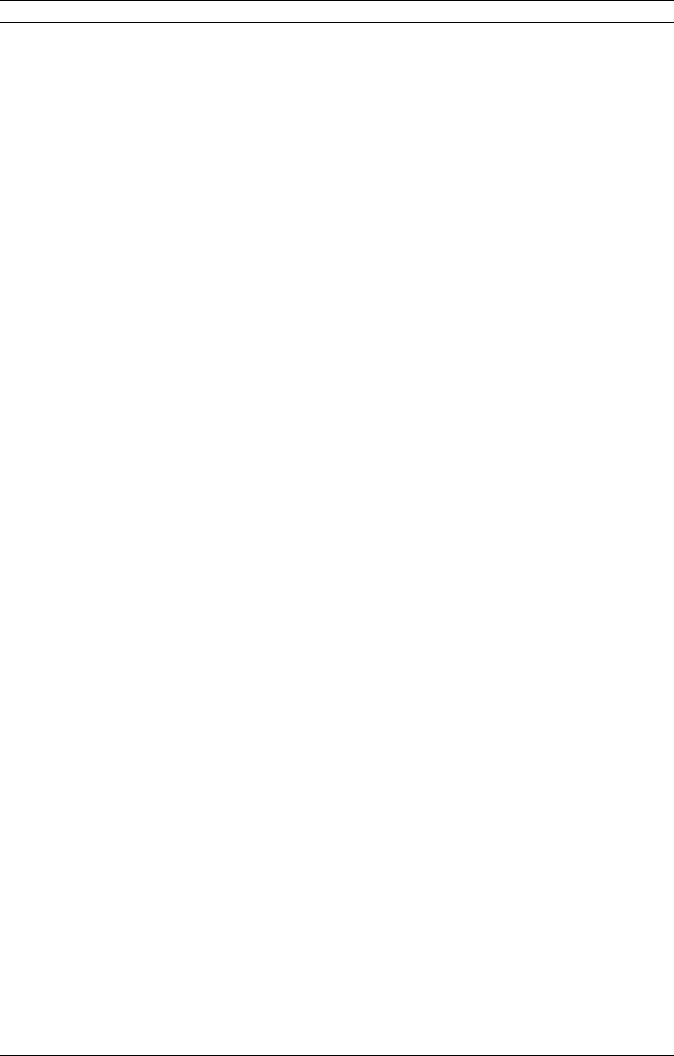
INSURING INTENTIONAL TORTS ARTICLE (FINAL) (DO NOT DELETE) 6/1/2015 9:09 AM
92 HASTINGS BUSINESS LAW JOURNAL Vol. 8:1
that the purposes of punitive damages—to deter misconduct and punish the
wrongdoer—would allegedly be thwarted if insurance covered punitive
damages.
100
Yet, in making such pronouncements, the courts do not cite any
empirical evidence to support such conclusions. Further, the reasoning is
flawed. The premise of such decisions is that the policyholder thinks, “I
have insurance to cover me if punitive damages are awarded so I should go
ahead and engage in criminal, egregious or reckless behavior.” Other than
in the context of first party insurance fraud (e.g., burning down a house to
collect under an insurance policy because the homeowner cannot sell the
house in today’s housing market and cannot afford to pay the mortgage),
does anyone really believe that a policyholder reviews its insurance to see
if he or she will be covered before deciding whether to commit a crime or
tort?
In addition, if an insurer agrees to cover punitive damages, and many
insurers do,
101
why should the insurer be permitted to avoid paying after the
fact based upon public policy grounds? Insurers should not be permitted to
draft policies that cover punitive damages, collect premiums for such
policies from policyholders, and then be permitted to argue such coverage
is against public policy when a claim arises. Indeed, once the policyholder
pays the premium for a policy that does not exclude coverage for punitive
damages, the policyholder can reasonably expect punitive damages will be
covered.
For these reasons, the majority of courts have held that policyholders
can recover from their insurers for punitive damage awards against them
unless such damages are expressly excluded from coverage.
102
Moreover,
even in jurisdictions where courts have held insurance for punitive
damages is against public policy, most of them allow for recovery of
punitive damages if they are awarded on the basis of vicarious liability.
103
arguments for, among other things, insurance for punitive damages).
100
. U.S. Concrete Pipe Co., 437 So. 2d at 1064; Fischer, supra note 99, at 161.
101
. Standard form commercial general liability policies state that the insurer agrees to pay “all
sums” the policyholder is “legally obligated to pay as damages” without limiting the covered damages
to only compensatory damages. See COMMERCIAL GENERAL LIABILITY COVERAGE FORM, supra note
78.
102
. See sources cited supra note 29.
103
. See sources cited supra note 33.
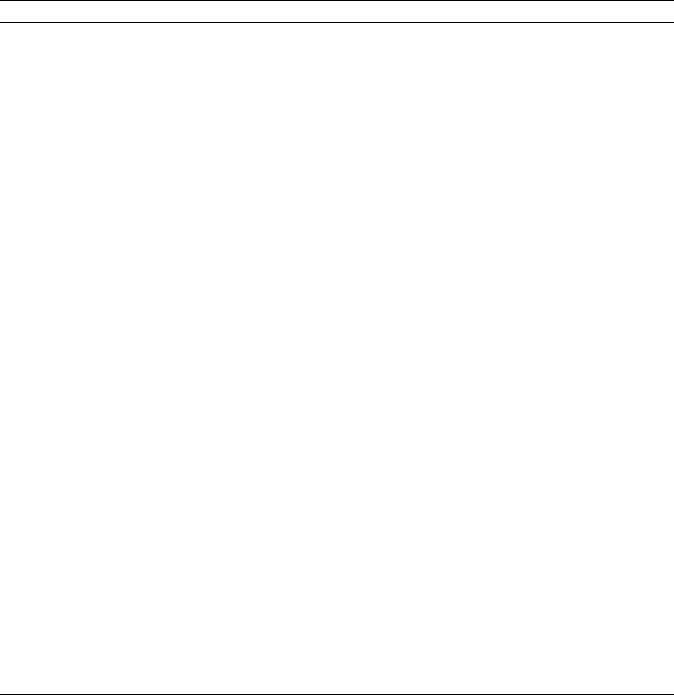
INSURING INTENTIONAL TORTS ARTICLE (FINAL) (DO NOT DELETE) 6/1/2015 9:09 AM
Winter 2012 INTENTIONAL TORT INSURANCE 93
V. PUBLIC POLICY CONSIDERATIONS
A. PUBLIC POLICY ARGUMENTS IN FAVOR OF AND AGAINST INSURANCE
FOR INTENTIONAL INJURIES OR DAMAGE
Proponents of the myth that insurance is not available for intentional
injuries or damages primarily rely upon public policy as its basis. The
basic theory, known as the “moral hazard” problem, posits that the
policyholder is encouraged to engage in bad behavior because the
policyholder would either be rewarded for bad behavior by being able to
recover under insurance policies for the damage he causes to his own
property, or he would have little or no incentive not to engage in bad
behavior if he will be covered for the injuries or damages he causes.
104
Examples of courts applying this logic are most commonly found in
the first party insurance context, such as in situations where the court
rejects a beneficiary’s attempt to recover under a life insurance policy
where the beneficiary murdered the named insured.
105
Similarly, courts
often enforce an insurer’s decision not to cover the amount of a property
loss where the policyholder intentionally destroyed the property by, for
example, arson.
106
The reasoning of such decisions is understandable in the
104
. Judge Easterbrook has described the moral hazard problem by stating that “once a person has
insurance, he will take more risks than before because he bears less of the cost of his conduct.” W. Cas.
& Sur. Co. v. W. World Ins. Co., 769 F.2d 381, 385 (7th Cir. 1985). Numerous other commentators also
have addressed the moral hazard problem. See, e.g., Gary T. Schwartz, The Ethics and Economics of
Tort Liability Insurance, 75 CORNELL L. REV. 313, 338 n.117 (1990) (“‘Moral hazard’ is sometimes
distinguished from ‘morale hazard’, the former referring to deliberate acts like arson, the latter to the
mere relaxation of the defendant’s discipline of carefulness.” (citing C. ARTHUR WILLIAMS, JR. &
RICHARD M. HEINS, RISK MANAGEMENT AND INSURANCE 217 (4th ed. 1981))); Scott E. Harrington,
Prices and Profits in the Liability Insurance Market, in 42 LIABILITY: PERSPECTIVES AND POLICY, 47
(Robert E. Litan & Clifford Winston eds., 1988) (“Moral hazard is the tendency for the presence and
characteristics of insurance coverage to product inefficient changes in buyers’ loss prevention activities,
including carelessness and fraud . . . .”); JERRY, supra note 33, at 13 (“The existence of insurance could
have the perverse effect of increasing the probability of loss . . . This phenomenon is called moral
hazard.”); George L. Priest, The Current Insurance Crisis and Modern Tort Law, 96 YALE L.J. 1521,
1547 (1987) (“Moral hazard refers to the effect of the existence of insurance itself on the level of
insurance claims made by the insured . . . Ex ante moral hazard is the reduction in precautions taken by
the insured to prevent the loss, because of the existence of insurance.”).
105
. See, e.g., New Eng. Mut. Life Ins. Co. v. Null, 605 F.2d 421, 424 (8th Cir. 1979) (referencing
“the accepted rule that a life insurance policy is void AB initio when it is shown that the beneficiary
thereof procured the policy with a present intention to murder the insured.”); Witte, 406 S.W.2d at 149
(explaining that a beneficiary cannot recover life insurance proceeds if he murders the insured);
Appleman and Appleman, supra note 9, at 481 (“It has uniformly been held that a beneficiary under a
contract of personal insurance who murders the insured cannot recover the policy benefits.”).
106
. See, e.g., 12 Appleman and Appleman, supra note 9, at 7031 (“Arson by the insured will
prevent him from recovering.”); JERRY, supra note 33, at 302. See also U.S. Fire Ins. Co. v. Beltmann
N. Am. Co., 695 F. Supp. 941, 948 (N.D. Ill. 1988) (“A fire insurance policy issued to anyone, which
purported to insure his property against his own willful and intentional burning of the same, would

INSURING INTENTIONAL TORTS ARTICLE (FINAL) (DO NOT DELETE) 6/1/2015 9:09 AM
94 HASTINGS BUSINESS LAW JOURNAL Vol. 8:1
first party context because the policyholder’s conduct is tantamount to
insurance fraud and is often criminal.
Yet, when examined, the suggestion that the policyholder would be
deterred from engaging in criminal conduct if insurance were not available
is suspect even in the first party insurance context. In fact, little, if any,
evidence has been offered to support the argument that the primary
deterrent to criminal conduct such as arson or murder is the unavailability
of insurance for the injuries or damage caused by such conduct. Indeed, in
many instances, there are substantial deterrents to convince the
policyholder not to engage in criminal behavior unrelated to insurance. For
example, arson is a felony. Murder is also a felony. One would expect that
imprisonment or the death penalty would be better deterrents to such
crimes than the forfeiture of insurance proceeds.
The same logic applies to auto accidents. One would expect that the
risk of grievous bodily harm to the policyholder himself or jail time for
manslaughter or assault would be a better deterrent to a deliberate accident
than the risk that insurance proceeds would be forfeited if it were
discovered the accident was deliberately caused by the policyholder.
Moreover, the insurer always has fraud as a defense to coverage in
situations where the policyholder deliberately purchases insurance
immediately before committing an intentional act that results in injury or
damage in order to recover under the policy.
107
In addition, what empirical evidence can the proponents of the myth
present that a policyholder reviews his or her insurance policy to determine
whether it will cover an injury or damage to a third party before causing the
injury or damage? In short, such arguments are based upon theory, not
evidence.
On the other hand, particularly in the third party insurance or liability
context, there are other competing public policies that favor allowing
insurance recoveries for intentional injuries or damage. For example,
public policy favors compensating innocent victims.
108
Thus, in situations
manifestly be condemned by all courts as contrary to a sound public policy . . .” (quoting Checkley v.
Ill. Cent. R.R. Co., 100 N.E 942, 944 (Ill. 1913)). One commentator refers to this as the “barn burning
defense,” stating, “the insured who intentionally burns his own barn is not entitled to collect the
insurance on it!” 1 WARREN FREEDMAN, RICHARDS ON THE LAW OF INSURANCE, § 1:13 (6th Ed.
1990).
107
. See, e.g., sources cited supra notes 105 and 106.
108
. See, e.g., Yousuf v. Cohlmia, 718 F. Supp. 2d 1279, 1288 (N.D. Okla. 2010) (stating that
compensating a wrongdoer’s innocent victims would outweigh the concern that the wrongdoer would
unjustly benefit); St. Paul Fire & Marine Ins. Co. v. Jacobson, 826 F. Supp. 155, 163–64 (E.D.Va.
1993) (where insurance policy does not explicitly exclude coverage of intentional acts, public policy of
compensating innocent victims outweighs public policy of not permitting coverage of intentional
action); Grinnell Mut. Reinsurance Co. v. Jungling, 654 N.W.2d 530, 539 (Iowa 2002); Vigilant Ins.
Co. v. Kambly, 319 N.W.2d 382, 385 (Mich. Ct. App. 1982) (“[T]here is great public interest in
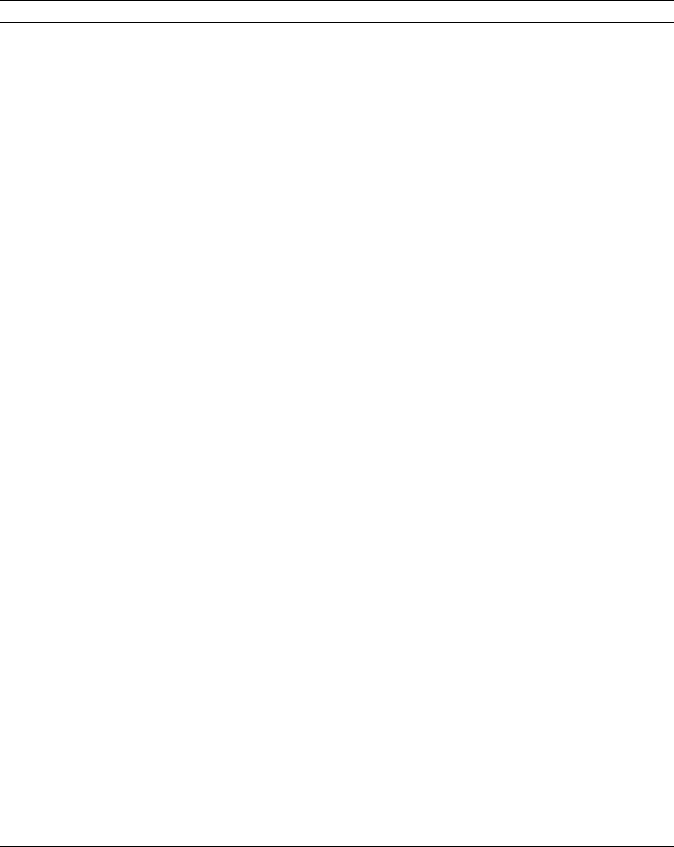
INSURING INTENTIONAL TORTS ARTICLE (FINAL) (DO NOT DELETE) 6/1/2015 9:09 AM
Winter 2012 INTENTIONAL TORT INSURANCE 95
where the victim would go uncompensated in the absence of the
tortfeasor’s insurance, public policy favors the victim recovering insurance
proceeds even if the policyholder intentionally harmed the victim.
Another competing public policy is the enforcement of contracts, such
as insurance policies, in accordance with their terms. Indeed, as one court
correctly has noted, “There is more than one public policy. One such
policy is that an insurance company which accepts a premium for covering
all liability for damages should honor its obligation.”
109
Insurers draft the
language contained in their policies so they do not need courts to create
“public policy” to help them avoid coverage for the types of claims the
insurers do not want to insure. The insurers can simply state, in clear
terms, in the policy the specific types of claims that are not covered.
110
If
the insurer fails to do that, then public policy favors enforcing the terms of
the policy in favor of coverage.
B. COURTS’ REJECTION OF PUBLIC POLICY ARGUMENTS AGAINST
ALLOWING INSURANCE FOR INTENTIONAL INJURIES OR DAMAGE
For the reasons discussed above, an increasing number of courts have
rejected the argument that public policy precludes coverage for intentional
injuries or damage.
111
The Sixth Circuit’s consideration of insurance for intentional
employment discrimination in School District for Royal Oak v. Continental
Casualty Co.
112
is instructive in this regard. In Royal Oak, the insured
school board settled an intentional religious discrimination suit brought by
an aggrieved teacher and then sought indemnification for that settlement
protecting the interests of the injured party.”).
109
. Creech, 516 So. 2d at 1174. Accord Sch. Dist. for Royal Oak v. Cont’l Cas. Co., 912 F.2d 844,
848 (6th Cir. 1990), reh’g denied, 921 F.2d 625 (6th Cir. 1990) (public policy favors enforcing the
terms of insurance policies and “common sense suggests that the prospect of escalating insurance costs
and the trauma of litigation, to say nothing of the risk of uninsurable punitive damages, would normally
neutralize any stimulative tendency that insurance might have”); Sch. Dist. for Royal Oak, 912 F.2d at
849 (“Public policy normally favors enforcement of insurance contracts according to their terms.”)
(citing Ranger Ins. Co. v. Bal Harbour Club, Inc., 549 So. 2d 1005, 1010 n.1 (Fla. 1989) (Ehrlich, C.J.,
dissenting))); Nw. Natl. Cas. Co., 307 F.2d at 444 (Gewin, J., concurring) (noting the public policy
favoring the enforcement of contracts); Union Camp Corp. v. Cont’l Cas. Co., 452 F. Supp. 565, 568
(“Exercise of the freedom of contract is not lightly to be interfered with. It is only in clear cases that
contracts will be held void as against public policy.”).
110
. See sources cited supra note 109.
111
. See, e.g., School Dist. for Royal Oak, 912 F.2d at 848 (applying Michigan law); Ranger Ins.
Co., 509 So. 2d at 946 (en banc), rev'd., 549 So. 2d 1005 (Fla. 1989); and Indep. Sch. Dist. No. 697 v.
St. Paul Fire & Marine Ins. Co., 495 N.W.2d 863, 867 (Minn. Ct. App.), review granted, No. 92-1625,
1993 Minn. LEXIS 225 (1993) (where policy provides coverage for intentional injuries, public policy
will not create absolute rule of insurability).
112
. 912 F.2d 844 (6th Cir. 1990).
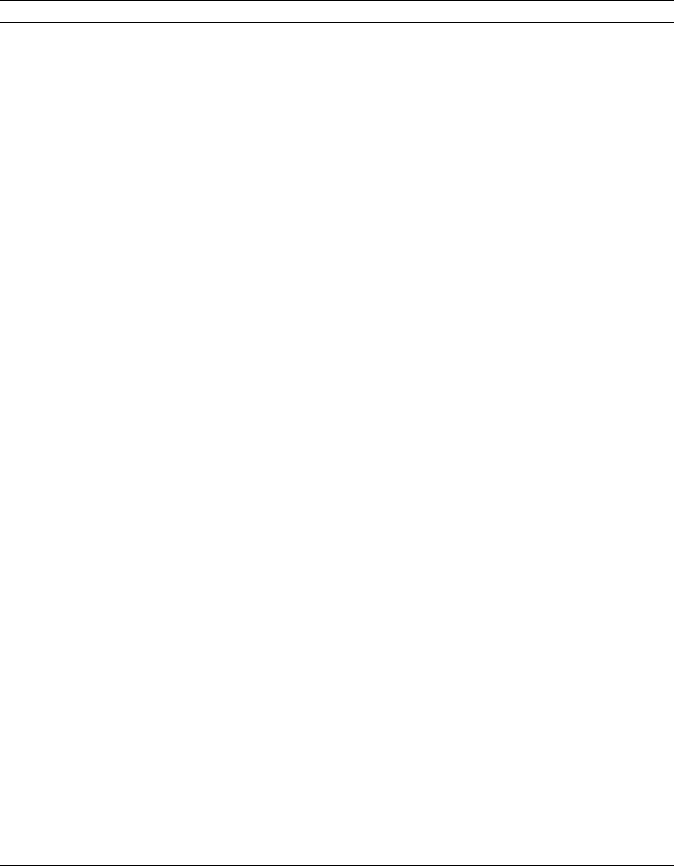
INSURING INTENTIONAL TORTS ARTICLE (FINAL) (DO NOT DELETE) 6/1/2015 9:09 AM
96 HASTINGS BUSINESS LAW JOURNAL Vol. 8:1
under a commercial general liability insurance policy.
113
The policy
covered “‘all loss’ that the school district or its employees become legally
obligated to pay . . . provided that the subject of the loss does not include
‘matters which shall be deemed uninsurable under state law.’”
114
The district court in Royal Oak held that the policy covered the school
district’s liability for its intentional discrimination.
115
The insurer invoked
both the contractual exclusion for “matters that are uninsurable under state
law” and the argument that Michigan public policy allegedly precluded
enforcement of the coverage.
116
Citing cases in which Michigan courts
found coverage for a psychiatrist’s liability for “felonious sexual activity,”
the district court had held that, “Michigan does not as a general rule bar
recovery under public liability policies simply because some illegal act was
involved in the damage.”
117
The Sixth Circuit affirmed. As an initial matter, the court questioned
the assumption that insurance for intentional discrimination promotes
wrongdoing: “Perhaps the existence of liability insurance might
occasionally ‘stimulate’ discrimination, but common sense suggests that
the prospect of escalating insurance costs and the trauma of litigation . . .
would normally neutralize any stimulative tendency the insurance might
have.”
118
The Sixth Circuit then noted “public policy normally favors
enforcement of insurance contracts according to their terms.”
119
The court
further reasoned that the insurer is responsible for drafting the policy, not
the policyholder or the court. Thus, the insurer is in the best position to
eliminate coverage for claims it does not want to insure.
120
On this point,
the Sixth Circuit quoted the district court which noted that, “insurers can
always exclude or limit coverage” for discrimination.
121
Finally, the Sixth
113
. 912 F.2d 844, 845–46 (6th Cir. 1990).
114
. Id. at 846.
115
. See Royal Oak, 912 F.2d at 849–50.
116
. Id. at 847–48.
117
. Royal Oak, 912 F.2d at 849 (quoting Bowman v. Preferred Risk Mut. Ins. Co., 83 N.W.2d 434,
436 (Mich. 1957)).
118
. Id. at 848. See also Ranger Ins. Co., 509 So. 2d at 948 (“Wrongdoers can be adequately
punished under present law by the imposition of punitive damages, where appropriate, since it is against
the public policy of this state to insure against such damages.”), rev’d, 549 So.2d 1005 (Fla. 1989); Id.
at 947 (“The proposition that insurance taken out by an employer to protect against liability under Title
VII will encourage violations of the Act is . . . speculative and erroneous.” (quoting Union Camp Corp.
v. Cont’l Cas. Co., 452 F. Supp. 565, 567 (S.D. Ga. 1978))); Indep. Sch. Dist. No. 697 v. St. Paul &
Marine Ins. Co., 495 N.W.2d 863, 867 (Minn. Ct. App.) (quoting Royal Oak, 912 F.2d at 848), review
granted, No. 92-1625, 1993 Minn. LEXIS 225 (Mar. 30, 1993).
119
. Royal Oak, 912 F.2d at 849 (citing Ranger Ins. Co., 549 So. 2d at 1010 n.1 (Ehrlich, C.J.,
dissenting)).
120
. Id.
121
. Id. (quoting the transcript of the proceedings in the district court).
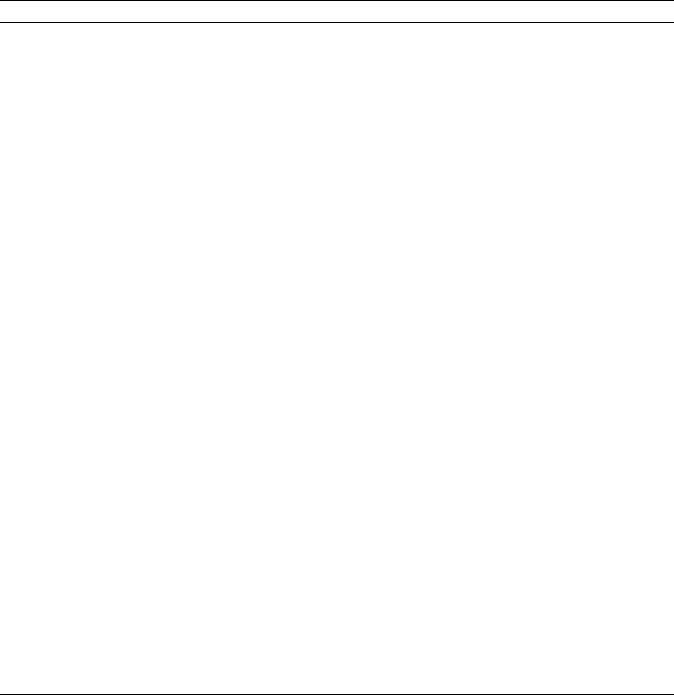
INSURING INTENTIONAL TORTS ARTICLE (FINAL) (DO NOT DELETE) 6/1/2015 9:09 AM
Winter 2012 INTENTIONAL TORT INSURANCE 97
Circuit stated, “had the company wished to exclude coverage for
intentional . . . discrimination in employment, it could and should have said
so.”
122
Other courts that have rejected insurers’ public policy arguments have
analyzed the issue similarly. For example, some have questioned whether
the inference that insurance stimulates wrongdoing can overcome the
“competing public policies . . . that favor freedom of contract and the
enforcement of insurance contracts according to their terms.”
123
Other
courts have pointed to the insurance industry’s ability to discourage
undesirable behavior.
124
Such courts have noted that insurance companies
are capable of policing their own policyholders and that insurance
companies have ample motivation to prevent policyholders from
recovering for intentionally incurred losses if they so desire.
125
In sum, the courts that have rejected public policy based arguments
that insurance should not be available for intentional injuries or damage
have done so for three primary reasons. First, they have noted the lack of
empirical evidence to support the assumption that insurance promotes
intentional wrongdoing.
126
Second, they have noted the competing public
policies that favor the enforcement of an insurer’s agreement to provide
coverage under its policies and the need to compensate the victims.
127
122
. Royal Oak, 912 F.2d at 849.
123
. See, e.g., Independent Sch. Dist. No. 697, 495 N.W.2d at 868; see also Royal Oak, 912 F.2d at
849.
124
. See, e.g., Ranger Ins. Co., 509 So. 2d at 948 (“The marketplace itself will discourage wrongful
acts of discrimination.”); Indep. Sch. Dist. No. 697, 495 N.W.2d at 867 (quoting Royal Oak, 912 F.2d at
848).
125
. See, e.g., Royal Oak, 912 F.2d at 849 (“Had the company wished to exclude coverage for
intentional religious discrimination in employment, it could and should have said so.”); Union Camp
Corp. v. Continental Cas. Co., 452 F. Supp. 565, 568 (S.D. Ga. 1978) (“Continental and other insurers
which have issued policies containing such clauses have not up to now conceived that they were
violating public policy by writing insurance policies insuring against losses resulting from
discriminatory employment practices.”); Ranger Ins. Co., 509 So. 2d at 947 (citing Union Camp, 452 F.
Supp. At 567–68); University of Ill. V. Cont’l Cas. Co., 599 N.E.2d 1338, 1350–51 (Ill. App. Ct.) (“The
insurer is an informed contracting party with no inferiority in bargaining position and should not be
allowed to escape from the contract it freely entered into . . . This court will not rewrite . . . policy to
create an exclusion.”), appeal denied, 606 N.E.2d 1235 (Ill. 1992); Independent Sch. Dist. No. 697, 495
N.W.2d at 868 (“The carrier is, of course, free to expressly provide an exclusion for such conduct in the
future.”).
126
. See, e.g., Ranger Ins. Co., 509 So. 2d at 947 (“The proposition that insurance taken out by an
employer to protect against liability under Title VII will encourage violations of the Act is . . .
speculative and erroneous.”).
127
. See St. Paul Fire & Marine Ins. Co. v. Jacobson, 826 F. Supp. 155, 164–65 (E.D. Va. 1993)
(public policy does not forbid patients from being compensated by doctor’s professional liability policy
for doctor’s intentional insemination of them with his own sperm), aff’d, 48 F.3d 778 (4th Cir. 1995);
St. Paul Fire & Marine Ins. Co. v. Shernow, 610 A.2d 1281, 1285–86 (Conn. 1992) (public policy does
not prohibit indemnity for compensatory damages flowing from dentist’s intentional sexual assault of
patient); St. Paul Fire & Marine Ins. Co. v. Asbury, 720 P.2d 540, 542 (Ariz. Ct. App. 1986) (because
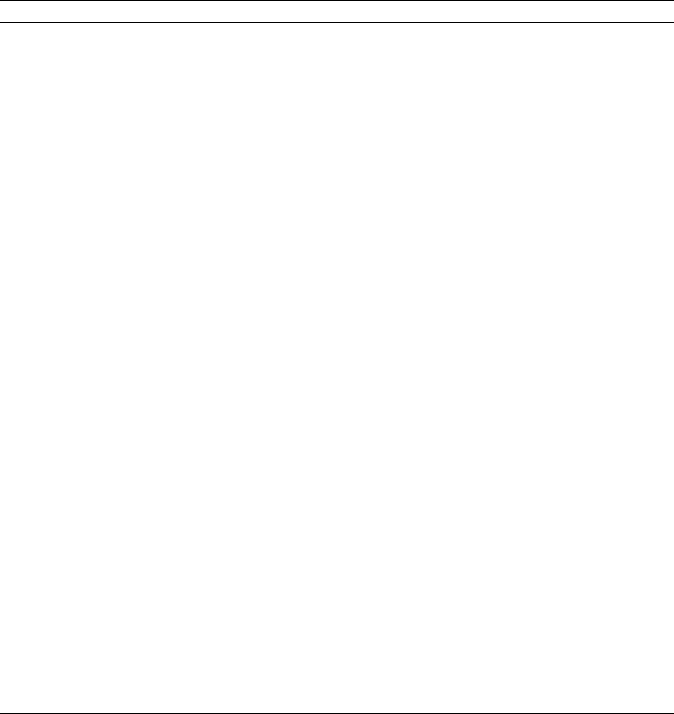
INSURING INTENTIONAL TORTS ARTICLE (FINAL) (DO NOT DELETE) 6/1/2015 9:09 AM
98 HASTINGS BUSINESS LAW JOURNAL Vol. 8:1
Third, they have emphasized that insurers can themselves exclude coverage
for specific types of intentional wrongdoing when drafting the policies so
insurers should not attempt to avoid their contractual obligations when
claims are presented by appealing to vague public policy concerns with the
expectation that the courts will do for the insurers what the insurers
themselves failed to do when they drafted the policies.
128
C. SHOULD PUBLIC POLICY EVEN BE PART OF THE ANALYSIS?
When analyzing courts’ efforts to determine the prevailing “public
policy” in the context of whether insurance should be allowed to cover
intentional injuries or damage, one question comes to mind: what is the
basis for courts’ authority to be the arbiter of public policy? The short
answer is the Restatement (Second) of Contracts. Under the Restatement, a
contract or term is unenforceable when public policy considerations clearly
outweigh the interest of enforcement.
129
By not explicitly limiting how
courts should discern the controlling public policy, the Restatement
arguably implicitly provides courts the authority to decide what is needed
to protect public welfare without giving the courts a specific list of sources
to consult in their efforts to discern public policy.
130
Arizona public policy favors compensating injured persons) victims of doctor’s sexual abuse can be
compensated through his professional liability policy); Hudson v. State Farm Mut. Ins. Co., 569 A.2d
1168, 1170–71 (Del. 1990) (refusing to void coverage for intentional wrongdoing under an automobile
policy, despite the public policy exclusion because of the competing public policy behind the state
motor vehicle financial responsibility law); Vigilant Ins. Co. v. Kambly, 319 N.W.2d 382, 385 (Mich.
Ct. App. 1982) (allowing insurance recovery for a physician’s sexual assault of his patient because “it is
not the insured who will benefit, but the innocent victim who will be provided compensation for her
injuries”); Independent Sch. Dist. No., 495, N.W.2d at 868; S.S. v. State Farm Fire & Cas. Co., 808
S.W.2d 668, 671 (Tex. Ct. App. 1991) (concluding that a homeowner’s insurance policy provides
coverage for the transmission of a sexually transmitted disease by relying on the analogous context of
automobile insurance in which public policy favors the compensation of tort victims).
128
. See, e.g., Royal Oak, 912 F.2d at 849 (“Had the company wished to exclude coverage for
intentional religious discrimination in employment, it could and should have said so.”); Union Camp
Corp., 452 F. Supp. at 568 (“Continental and other insurers which have issued policies containing such
clauses have not up to now conceived that they were violating public policy by writing insurance
policies insuring against losses resulting from discriminatory employment practices.”); Ranger Ins. Co.,
509 So. 2d at 947; Univ. of Ill. V. Cont’l Cas. Co., 599 N.E.2d 1338, 1350–51 (Ill. App. Ct.) (“The
insurer is an informed contracting party with no inferiority in bargaining position and should not be
allowed to escape from the contract it freely entered into . . . This court will not rewrite . . . policy to
create an exclusion.”), appeal denied, 606 N.E.2d 1235 (Ill. 1992); Independent Sch. Dist. No. 697, 495
N.W.2d at 868 (“The carrier is, of course, free to expressly provide an exclusion for such conduct in the
future.”).
129
. See RESTATEMENT (SECOND) OF CONTRACTS § 178 (1981).
130
. See RESTATEMENT (SECOND) OF CONTRACTS, supra note 129, § 179, cmt. a (the rule allowing
for the deriving of public policy is “an open-ended one that does not purport to exhaust the categories of
recognized public policies.”).

INSURING INTENTIONAL TORTS ARTICLE (FINAL) (DO NOT DELETE) 6/1/2015 9:09 AM
Winter 2012 INTENTIONAL TORT INSURANCE 99
The Restatement does, however, provide the courts with some
guidance. Section 178 of the Restatement (Second) of Contracts provides
that a contract term is unenforceable “if legislation provides that it is
unenforceable or the interest in its enforcement is clearly outweighed in the
circumstances by a public policy against the enforcement of such terms.”
131
In other words, courts should first look to legislation to determine whether
the public’s duly elected legislature has spoken on the issue.
It is only when the legislature has not spoken that courts should
attempt to discern the controlling public policy themselves, which is what
opens the door for courts to go awry. Courts are not well equipped to
discern public policy. Federal judges, for example, are appointed, not
elected, so they do not even purport to be representatives of the people.
132
Nor is that their job. Judges are intended to apply the law, not create the
law in accordance with their views of what the public wants. Nonetheless,
because the Restatement does not give the courts any guidance aside from
legislation, courts have turned to case law and their own perceptions of
what would best serve the public welfare.
133
An old English decision vividly describes the unbridled nature of
courts’ attempts to engage in public policy analysis, as “a very unruly
horse, and when once you get astride it you never know where it will carry
you.”
134
In fact, not only are they unbridled and unruly, but courts’ public
policy pronouncements can lead to very different conclusions over time.
135
One problem with courts creating public policy and then refusing to
enforce contracts such as insurance policies is that it frustrates the
reasonable expectations of one of the parties—the policyholder. Indeed, if
an insurance policy is not enforced after one side has performed (e.g., the
policyholder paid a premium and acted in accordance with the reasonable
expectation that he had insurance), then the other party (e.g., the insurer)
has been unjustly enriched in violation of one of the key purposes
contracts. For these reasons, Professor Corbin once described the
supporters of cavalier decisions by courts not to enforce contracts based
upon public policy grounds as follows: “The loudest and most confident
131
. See RESTATEMENT (SECOND) OF CONTRACTS , supra note 129, at 178(1).
132
. See U.S. Const. art. III, § 2.
133
. See generally JOHN D. CALAMARI AND JOSEPH M. PERILLO, THE LAW OF CONTRACTS, 22–1
(3d ed. 1987) (noting that contracts can be set aside by vague notions of public policy); 6A ARTHUR
LINTON CORBIN, CORBIN ON CONTRACTS, 1374 (1962) (noting that contracts can be declared
unenforceable not just due to legislative decrees, but also based upon courts’ reference to public policy
based upon the courts’ perception of “prevailing mores of the community (contra bones mores)”).
134
. Richardson v. Mellish, 130 Eng. Rep. 394, 303 (C.P. 1824).
135
. See, e.g., E. ALLEN FARNSWORTH, CONTRACTS § 5.2 (1982) (“As the interests of society
change, courts are called upon to recognize new policies, while established policies become obsolete or
are comprehensively dealt with by legislation.”).
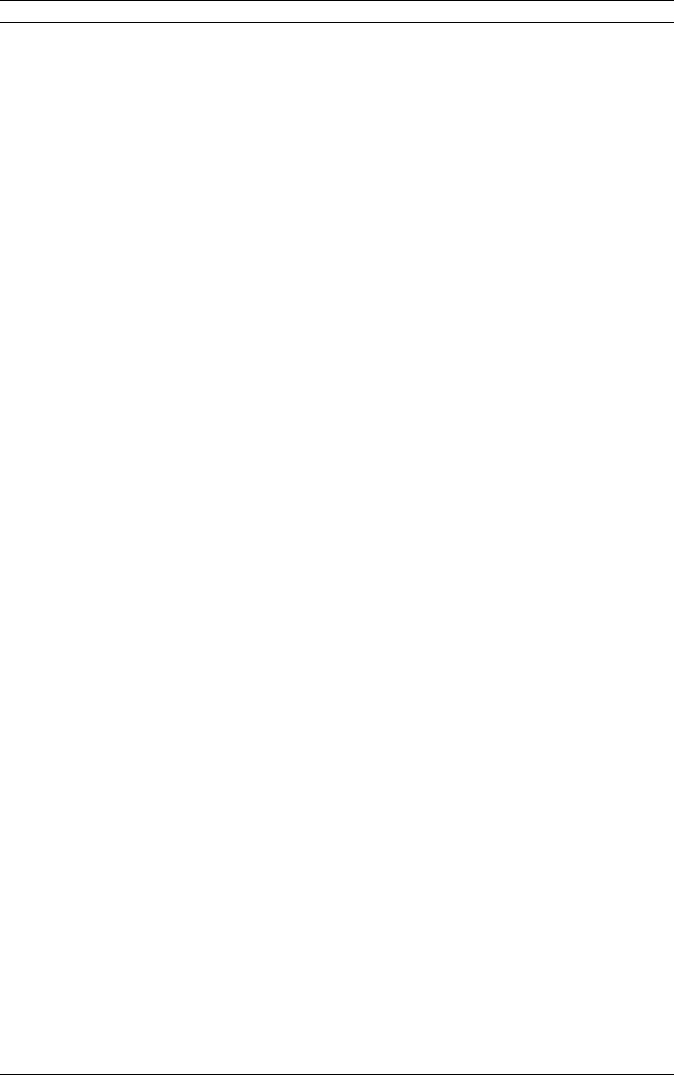
INSURING INTENTIONAL TORTS ARTICLE (FINAL) (DO NOT DELETE) 6/1/2015 9:09 AM
100 HASTINGS BUSINESS LAW JOURNAL Vol. 8:1
assertions as to what makes for the general welfare and happiness of
mankind are made by the demagogue and the ignoramus.”
136
D. HOW COURTS SHOULD BE ADDRESSING PUBLIC POLICY ISSUES
With this background in mind, how should courts determine whether
public policy favors or disfavors enforcing insurance policies that provide
coverage for intentional injuries or damages? The answer is multilayered
and is different in the first party (e.g., life insurance and property
insurance) versus third party (e.g., liability) insurance context.
One, in a democratic political system, because legislatures represent
the public, not courts, legislatures should establish public policy just as
California, for example, has done in establishing the parameters of when
insurance can cover intentional injuries or damage.
137
In the absence of
legislation relating to insurance coverage for intentional torts, courts should
enforce the coverage obligations of the insurers in accordance with the
terms of the policy and the rules of insurance policy interpretation such as
contra proferentum and the “reasonable expectations” doctrine.
Two, if courts nonetheless feel compelled to create public policy
where the relevant legislature has not spoken, then the answer depends
upon whether first party or third party insurance is at issue. In the first
party context, the policyholder should not be able to recover if the act
creating the damages is criminal (e.g., the policyholder murders someone in
order to recover life insurance) or fraudulent (e.g., the policyholder
purchases insurance with the intent of destroying the property in order to
recover insurance proceeds) because the policyholder, for his own personal
financial gain, has engaged in criminal or fraudulent misconduct.
In the liability context, the analysis is different because it cannot
credibly be argued that an insurance recovery is the incentive to engage in
the misconduct. Consequently, whether the misconduct is criminal or
intentional is not important to the insurance analysis because the
policyholder is acting for some reason other than to recover insurance
proceeds for its own financial gain. Consequently, public policies such as
compensating victims and enforcing contracts outweigh the notion that it
would be unseemly to allow insurance recoveries for such conduct. Thus,
136
. Corbin, supra note 133, at 1375.
137
. See Cal. Civ. Code § 533 (West 1985). See also Russ-Field Corp. v. Underwriters at Lloyd’s,
330 P.2d 432, 439–40 (Cal. App. 1958) (“A ‘willful act’ as used in this statute connotes something
more blameworthy than the sort of misconduct involved in ordinary negligence, and something more
than the mere intentional doing of an act constituting such negligence”); accord Cal. Civ. Code § 1668
(West 1985) (declaring that contracts that seek to exempt one of the parties from responsibility for
willful injury are against public policy).

INSURING INTENTIONAL TORTS ARTICLE (FINAL) (DO NOT DELETE) 6/1/2015 9:09 AM
Winter 2012 INTENTIONAL TORT INSURANCE 101
if courts feel compelled to weigh competing public policies, the balance in
favor of allowing insurance for intentional injuries or damages in the
liability context far outweighs the unidentified and untenable public policy
arguments against it.
VI. CONCLUSION
It is a myth that insurance is not available for injuries or damages
intentionally caused. Although it is true some claims may be barred by the
fortuity doctrine or the “expected or intended” exclusion, there are
numerous examples of intentional torts that are expressly covered by
insurance such as defamation, disparagement, trademark infringement,
copyright infringement, employment discrimination, wrongful termination,
and invasion of privacy. Insurance is also available for punitive damages
in many jurisdictions regardless of whether the policyholder is directly or
indirectly liable for such damages. Insurers should not be permitted to
agree to insure such claims, collect a premium for such coverage, and then,
when claims arise, attempt to rely upon the “expected or intended”
exclusion or ask courts to deny coverage due to public policy concerns.
Courts should defer to the applicable legislatures to determine whether
public policy should permit insurance to cover intentional losses. If courts
nonetheless decide to engage in a public policy analysis, then the balance
of the competing public policies weighs in favor of allowing insurance to
cover intentional injuries or damage in the liability context. On the one
hand, little, if any, empirical evidence has been offered to support a public
policy argument that the availability of insurance to cover intentional
injuries or damage actually encourages the bad behavior that results in the
injuries or damage. On the other hand, by allowing insurance recoveries
for intentional injuries or damage in accordance with the terms of insurance
policies, the public policy interests of compensating injured victims and
enforcing the terms of contracts can be fulfilled.

INSURING INTENTIONAL TORTS ARTICLE (FINAL) (DO NOT DELETE) 6/1/2015 9:09 AM
102 HASTINGS BUSINESS LAW JOURNAL Vol. 8:1
* * *
